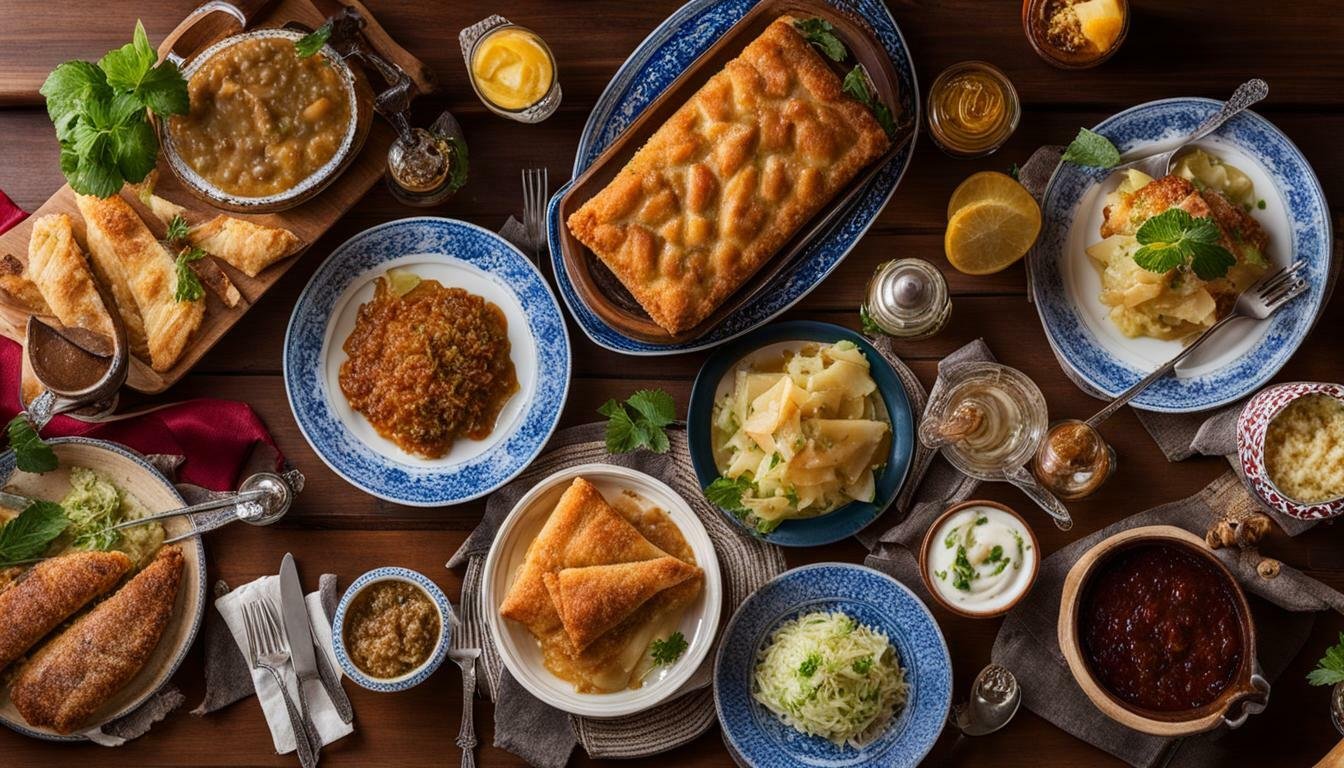Take Me to the Recipes
Forget lederhosen and yodeling (for now) and prepare to tantalize your taste buds with Austria! This captivating country boasts a culinary scene as rich and diverse as its mountain ranges and baroque palaces. Dive deeper than Wiener Schnitzel and Apple Strudel to discover a treasure trove of regional specialties, historical influences, and modern twists.
Imagine sinking your teeth into melt-in-your-mouth “Kaspressknödel”, cheesy dumplings steeped in tradition. Picture yourself savoring a hearty bowl of “Tafelspitz”, boiled beef fit for an emperor. And don’t miss the explosion of flavors in an authentic “Käsespätzle”, cheesy noodles that are pure comfort food heaven.
From the snow-capped peaks of Tirol to the bustling streets of Vienna, Austria’s cuisine reflects its landscapes and history. Explore the influence of neighboring cultures in Hungarian-inspired “Gulasch”, Italian-tinged “Spinatknödel”, and the legacy of the Ottoman Empire in delightful “Burek” pastries.
But Austria’s culinary story is far from over. Modern chefs are taking center stage, reinterpreting classics with innovative flair. Be surprised by fusion creations and locally sourced ingredients, showcasing the nation’s dynamism and dedication to quality.
So, put down the pretzel and raise a glass of Grüner Veltliner! Join us on a delicious journey through Austria, where every bite is an adventure and every flavor tells a story. Prepare to be surprised, delighted, and perhaps even yodel with joy after experiencing the true essence of Austrian cuisine.
Take Me to the Recipes
Austrian Cuisine – Key Takeaways:
- Austrian cuisine offers a rich and diverse culinary experience
- Traditional Austrian dishes are a reflection of the country’s history and geography
- Vienna is home to many of Austria’s most famous and popular recipes
- Austrian cuisine has a deep appreciation for culinary heritage and cooking traditions
- Austrian desserts are a true celebration of sweetness and are not to be missed
Where is Austria?

Austria is a landlocked country located in Central Europe, Austria is bordered by Switzerland and Liechtenstein in the west, Germany, Czech Republic and Slovakia in the north, Hungary to the east and Slovenia and Italy in the south.

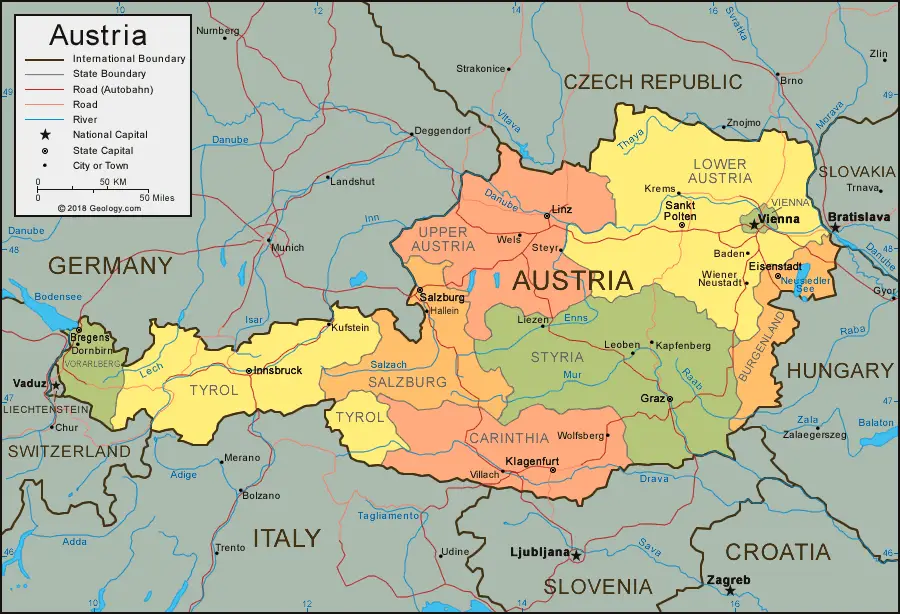
Index to the Contents
- Take Me to the Recipes
- More Articles
- Interesting Facts About Austria
- A Culinary Waltz Through Time: Austria’s History on a Plate
- Mountains & Meadows: How Austria’s Landscape Shapes its Delicious Dishes
- Traditional Austrian Cuisine: A Taste of History
- Popular Austrian Recipes
- Exploring Austrian Desserts
- Austrian Food Specialties: Beyond the Classics
- Exploring Austrian Food Culture
- Exploring Austria’s Ingredients: The Flavors of Austria
- How Healthy is Austrian Food?
- Tips for Cooking Authentic Austrian Cuisine Dishes
- Austrian Recipes you can try at Home
- Exploring Austrian Wine and Beer Pairings
- Conclusion
- FAQ’s
You may also be interested in the following article
- North and South American Cuisine – A Culinary Expedition
- Europe Cuisine: Savor the Continent’s Best Culinary Secrets!
- African Cuisine: Discover the Bold Flavors & Global Charm!
- Asian Cuisine Unlock its Secrets – Taste, Health & Global Influence!
Savor iconic Austrian Food – Click on each tantalizing picture to open up the Recipe
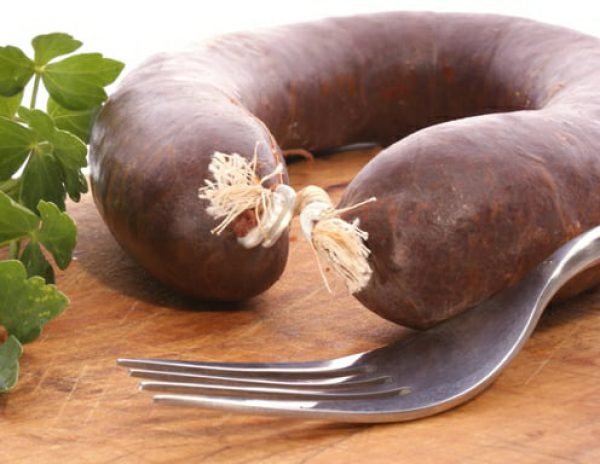



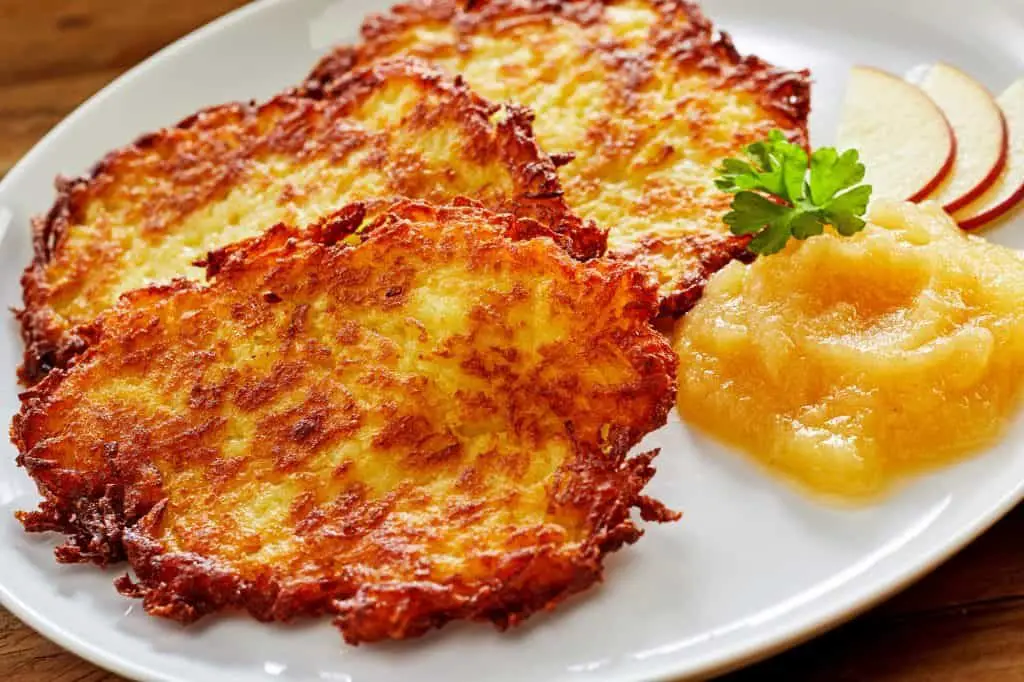
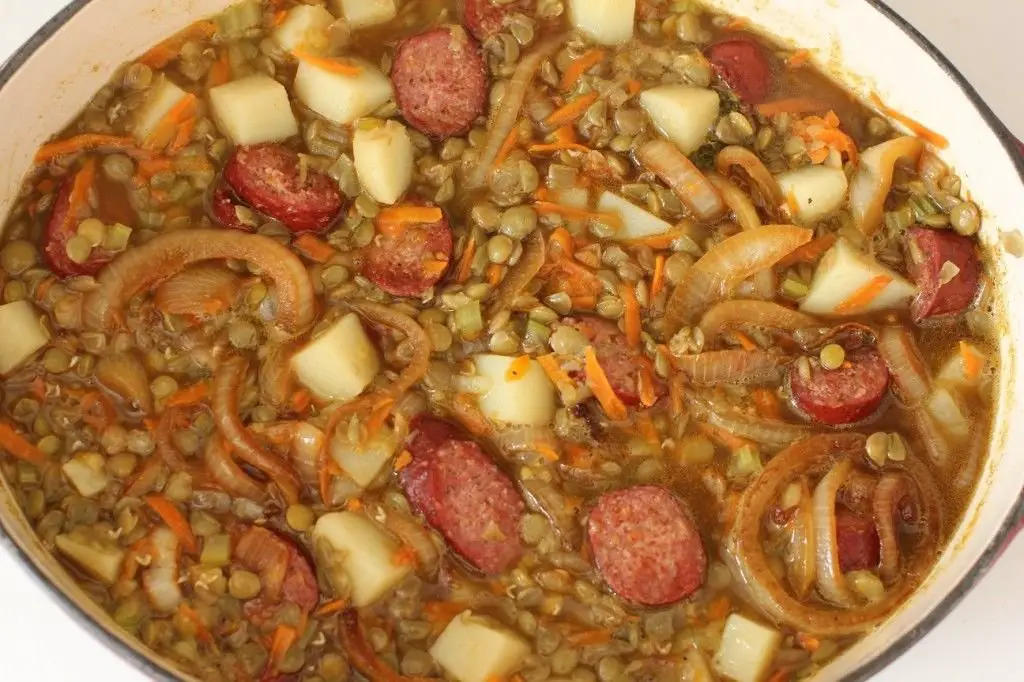
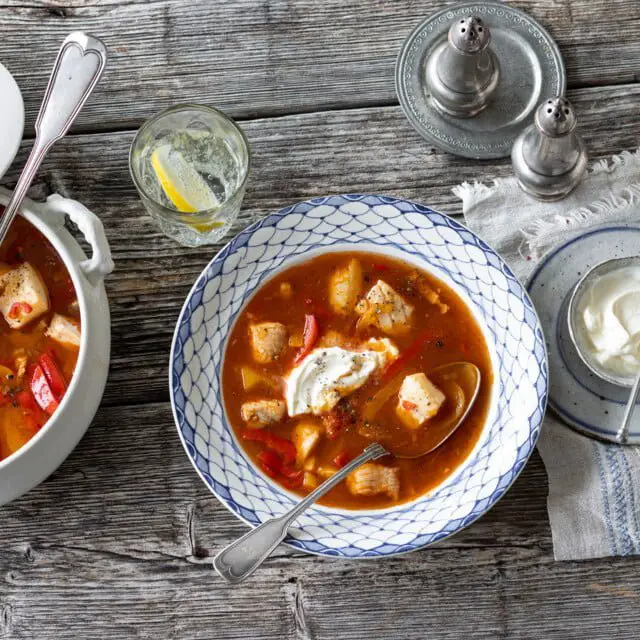
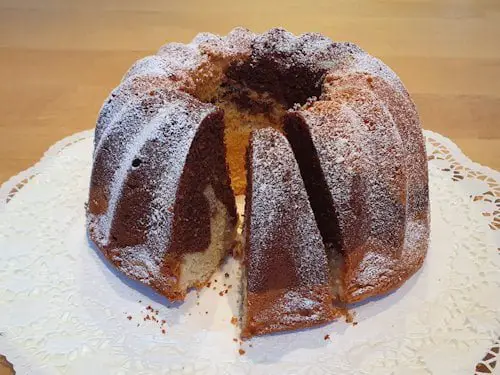


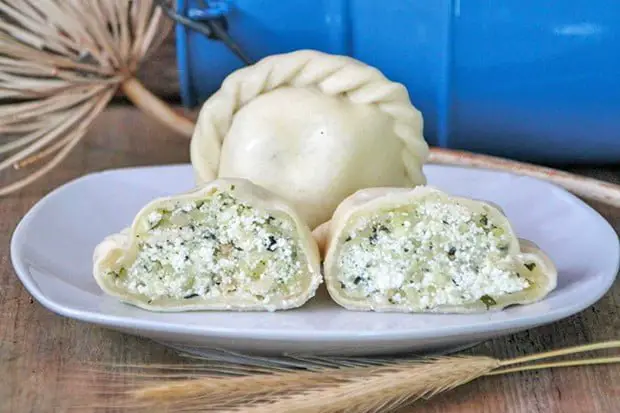
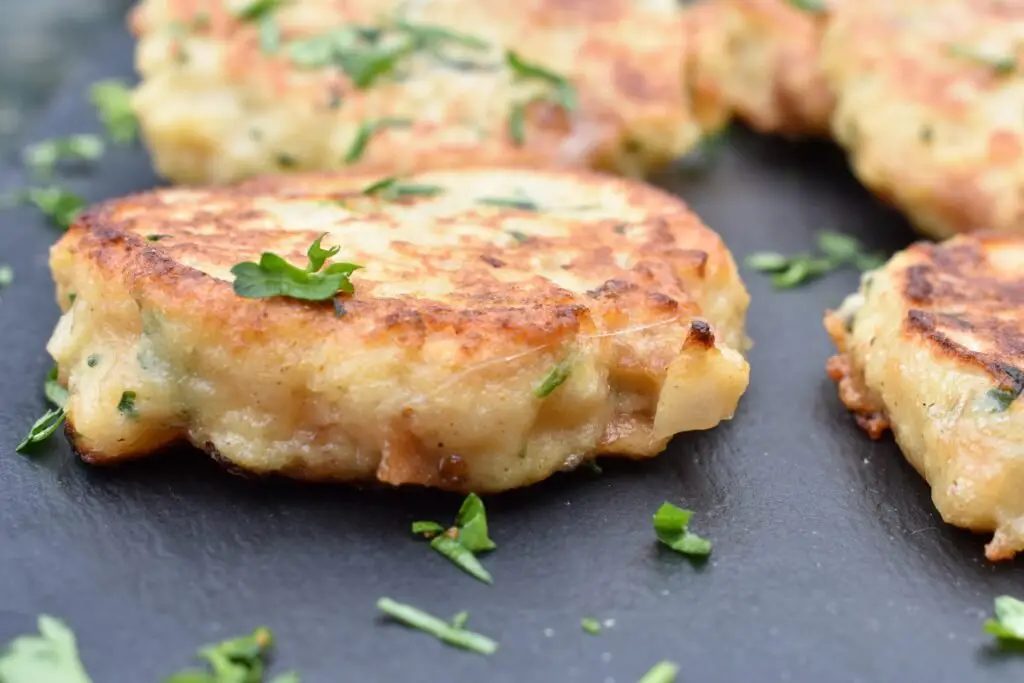
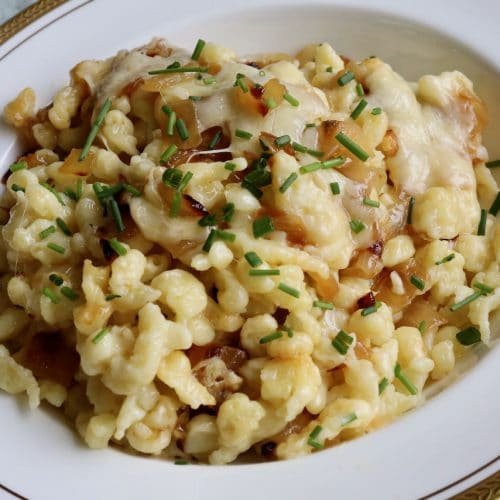
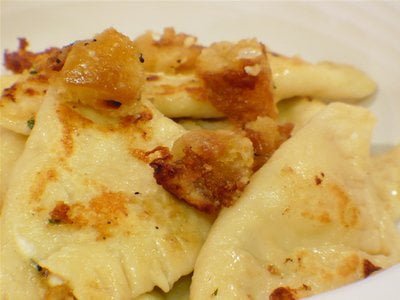



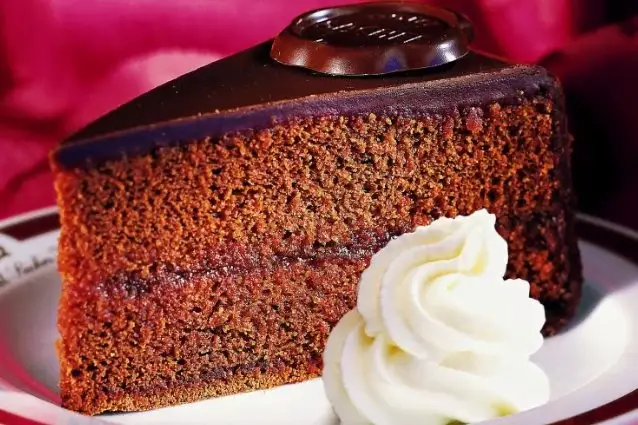
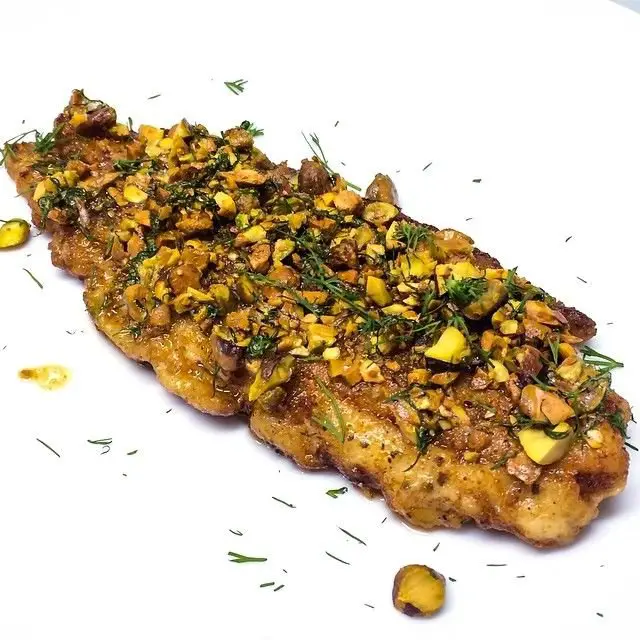
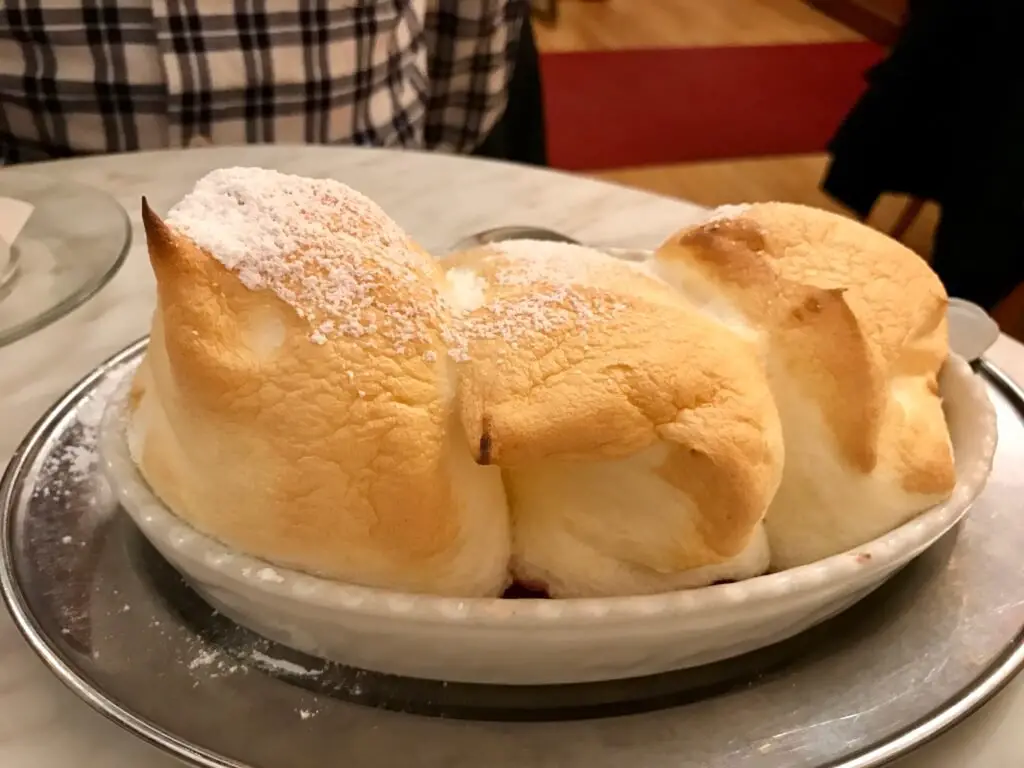

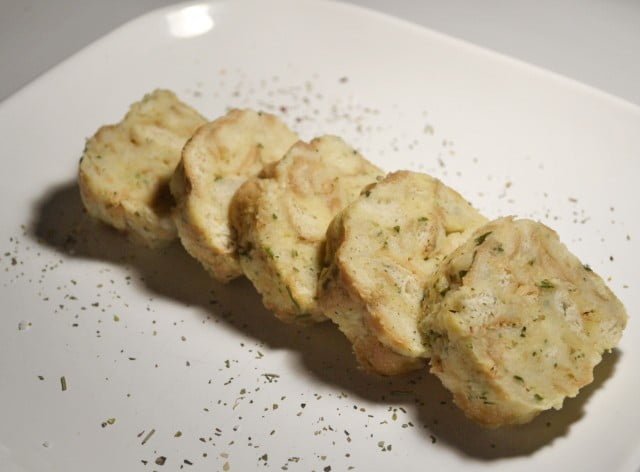
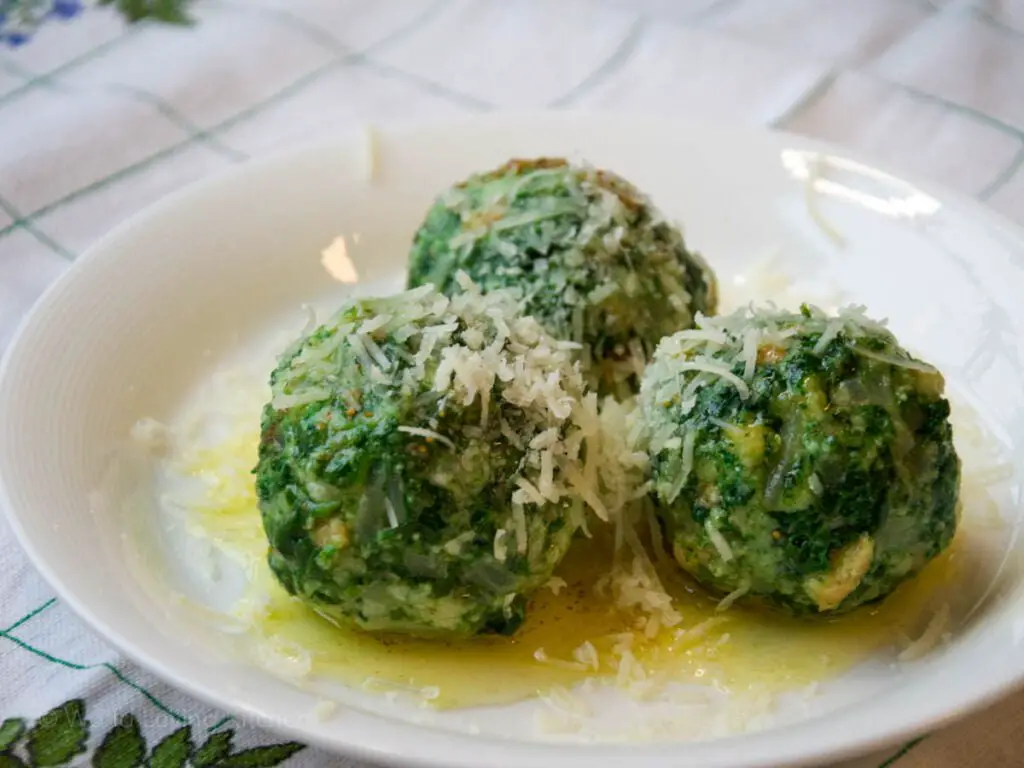


Interesting Facts About Austria
Musical Legacy
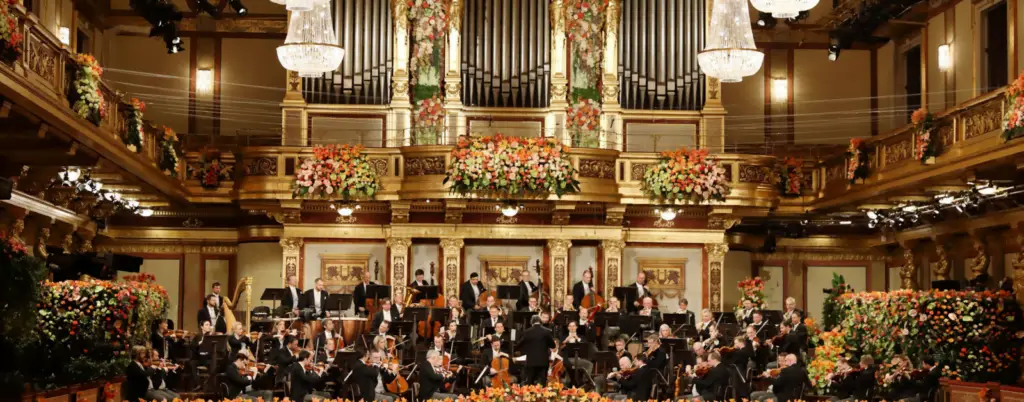
Austria is the birthplace of some of the world’s most renowned classical composers, including Wolfgang Amadeus Mozart, Ludwig van Beethoven, and Franz Schubert. The country’s musical heritage has left an indelible mark on the global cultural landscape.
Coffee Culture
Austria takes its coffee seriously. The traditional Viennese coffeehouse culture is an integral part of the country’s social life. Coffeehouses offer a leisurely atmosphere for patrons to enjoy a cup of coffee along with pastries and conversation.
Lipizzaner Horses

The Spanish Riding School in Vienna is famous for its Lipizzaner horses, a rare and distinctive breed. These horses are known for their graceful movements and are trained in classical dressage, a traditional form of horse training.
Lake Neusiedl – Shallow Wonder
Lake Neusiedl, shared between Austria and Hungary, is the largest endorheic lake in Central Europe, meaning it has no outlet. Surprisingly shallow, the lake is a vital habitat for diverse bird species and an excellent spot for water sports.
Grueling Alpine Races
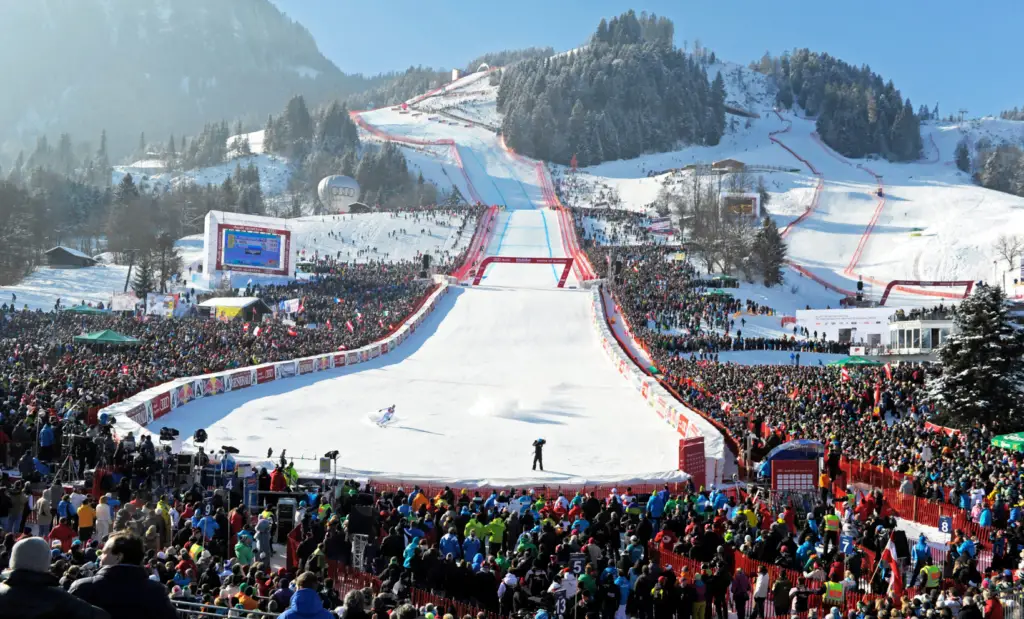
Austria hosts one of the most challenging alpine races, the Hahnenkamm in Kitzbühel. Skiers navigate steep slopes, including the infamous Streif downhill course, which is considered one of the most demanding in the world.
Vienna’s Sewer System
Vienna boasts an extensive and well-maintained sewer system, and unique guided tours take visitors underground to explore this fascinating network. It’s a different perspective on the city’s infrastructure.
The World’s Oldest Ferris Wheel

The Giant Ferris Wheel (Riesenrad) in Vienna’s Prater amusement park is one of the oldest in the world. It has been an iconic part of the city’s skyline since 1897 and offers panoramic views of Vienna.
Viennese Sausages
Austria is famous for its sausages, particularly the Wiener Würstel. Traditionally served with mustard and bread or as part of a hearty meal, these sausages are a staple of Austrian cuisine.
Habsburg Dynasty
The Habsburgs, one of Europe’s most influential royal families, originated in Austria. Their dynasty ruled over the Holy Roman Empire and various other territories for centuries, leaving a lasting impact on European history.
Krampus Night
In Austrian folklore, Krampus is a horned, anthropomorphic figure who accompanies St. Nicholas during the Christmas season. On Krampusnacht (Krampus Night), people dress up as Krampus and roam the streets, providing a unique and somewhat eerie holiday tradition.
F1 Heritage

Austria has a strong connection with two of the top racing teams.
Red Bull Ring (Spielberg, Austria)
While not owned by Red Bull Racing, the Red Bull Ring is located in Austria and has hosted Formula One races. It is often associated with the Red Bull Racing team due to its name.
References
Toto Wolff – Mercedes F1 team Principal
Toto Wolff, whose full name is Torger Christian “Toto” Wolff, was born on January 12, 1972, in Vienna, Austria. He is an Austrian businessman and motorsport executive known for his involvement in Formula One. Wolff has played a significant role in the success of the Mercedes-AMG Petronas Formula One Team, serving as its Team Principal and CEO.
Reference
Nikki Lauda
3 times world champion, Nikki Lauda was Austrian
A Culinary Waltz Through Time: Austria’s History on a Plate
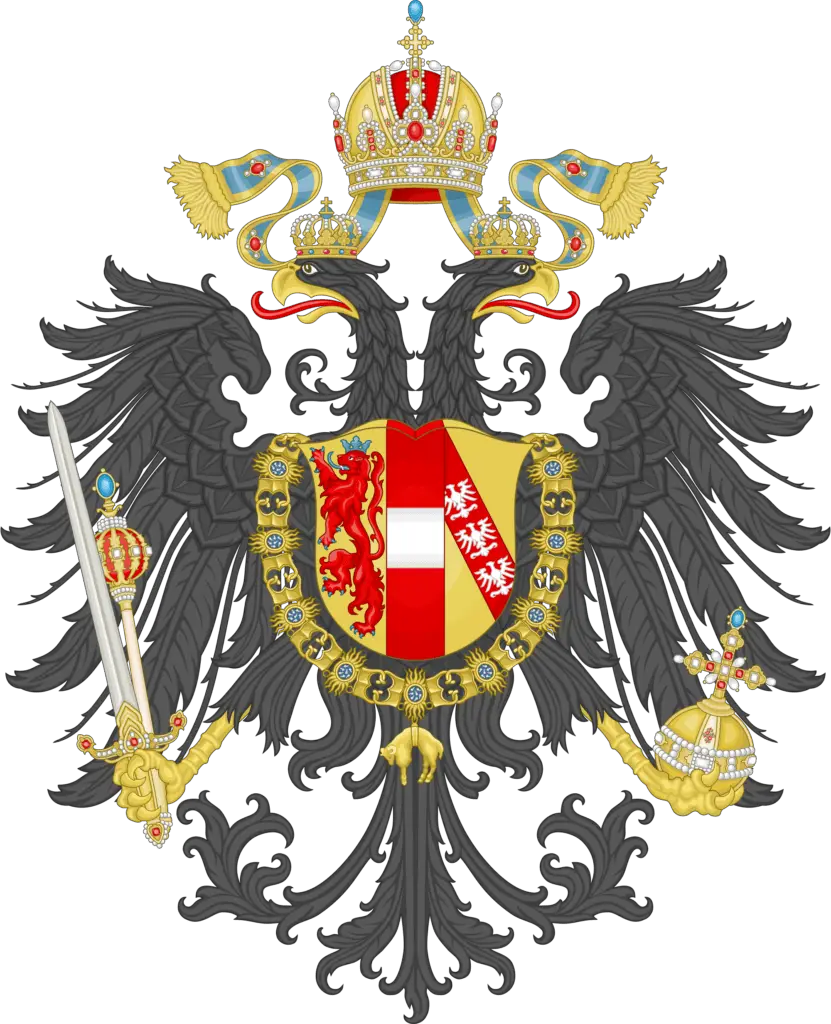
Forget the lederhosen and yodeling (for now!) – Austria’s culinary scene is a captivating waltz through history, each bite bursting with tradition and unexpected flavors. From hearty stews simmered for centuries to modern twists on classics, the country’s cuisine reflects its rich past and vibrant present.
So, put on your metaphorical dancing shoes and join us on a delicious journey!
Early Steps: Setting the Stage (500 BC – 5th century AD)
- Celtic Capers (500 BC – 15 BC): Imagine hearty meals fueled by barley, rye, and dairy, the foundation for Austria’s comforting “Hausmannskost” (home cooking). Think rustic breads, stews, and dumplings – perfect for warming up after a day in the mountains.
- Roman Revelry (15 BC – 5th century AD): The Romans waltzed in with grapes and winemaking, adding a touch of sophistication. Olive oil and spices like herbs and mustard joined the party, enriching the culinary landscape.
Medieval Munchies: Expanding the Menu (5th – 15th centuries)
- Holy Roman Harmony (962 – 1806): Trade with neighbors like Hungary and Italy introduced exciting new ingredients. Paprika spiced things up with goulash, while spinach added a twist to dumplings.
- Food guilds ensured quality and consistency, keeping everyone on the same delicious page.
Habsburg Hootenanny: A Feast for Emperors (14th – 19th centuries)
The Habsburg Empire, spanning from Imperial Russia to the Adriatic, was a multi-national realm with diverse cultures and languages.
Culinary Conquests:
- Turkish Invasion: The Turkish invasion of Europe introduced coffee beans to Viennese cooks, giving birth to Austria’s renowned coffee culture.
- Apfelstrudel: This Austrian pastry has Turkish origins, brought during the Turkish occupation.
- Wiener Schnitzel: While often associated with Austria, it likely originated in northern Italy.
- Palatschinken (Crêpes) and Gulasch: These delightful dishes came from the Hungarian plains.
- Roasts and Sausages: Originally Southern German delicacies.
- Pastries: Inspired by Bohemian traditions.
Austro-Hungarian Empire (1867 to 1918):
The Austro-Hungarian Empire further enriched Austrian cuisine.
- Viennese Cuisine: Flourished during this period, emphasizing elegance and refinement.
- Pastries and Coffeehouses: The Viennese coffeehouse culture thrived, offering delectable pastries like Sachertorte and Apfelstrudel.
- Influence of Hungary: Goulash, paprika, and other Hungarian flavors became integral to Austrian cooking.
Modern Marvels: A New Culinary Choreography (20th century – present)

After World Wars I and II, Austria’s culinary landscape evolved.
- Wartime Waltzes and Post-War Twists: Austerity led to simpler dishes using local ingredients. Traditions were cherished, but with a modern twist, focusing on convenience and quality.
- Modernization: Traditional recipes adapted to changing times, but classic dishes remained beloved.
- Regional Variations: While Viennese cuisine remains iconic, other regions contribute their own specialties.
- Farm-to-Table Movement: A renewed focus on local, seasonal ingredients emerged.
- Chefs Take the Lead: Since the late 20th century, culinary innovation has taken center stage. Local, seasonal ingredients and international influences create exciting reinterpretations of classics. Sustainability and farm-to-table philosophies are now part of the delicious choreography.
Regional Rhythms: Every State has its Signature Move
Austria’s diverse states boast unique culinary styles:
- Vienna: Elegant cafes, Sachertorte pastries, and schnitzel waltzes alongside goulash’s Hungarian flair.
- Tirol: Hearty stews, sausages, cheese dumplings, and apple strudel offer a taste of alpine comfort.
- Salzburg: Nockerl dumplings and Salzburger Nockerln (sweet soufflé) showcase local specialties, while Bavarian influences add a touch of oomph.
- Vorarlberg: Käsespätzle (cheese noodles) and Käsknöpfle (cheese buttons) are cheesy delights, paired with local wines for a perfect harmony.
Beyond the Plate: The Full Performance
Food is woven into Austria’s cultural fabric:
- Festival Feasts: “Almabtrieb” (cattle drives) and Christmas markets offer regional specialties, while showcasing the deep connection between food and tradition.
- Liquid Delights: Grüner Veltliner and Zweigelt wines waltz on your palate, while Vienna’s vibrant beer scene offers hoppy counterpoints.
Mountains & Meadows: How Austria’s Landscape Shapes its Delicious Dishes

Forget the postcard-perfect scenery for a moment, and imagine Austria on your plate! From snow-capped peaks to rolling hills and fertile valleys, the country’s diverse landscape plays a starring role in its cuisine. Buckle up for a delicious journey where geography and climate conduct the culinary orchestra!
Mountain Munchies:

- Alpine Altitude: High altitudes in Tirol and Vorarlberg mean shorter growing seasons. Hearty stews like “Eintopf” and “Kaspressknödel” (cheesy dumplings) provide winter fuel, while fresh cheeses and sausages showcase the region’s dairy prowess.
- Spice of Life: Think paprika! Hungary’s influence is evident in dishes like “Gulasch” (stew) and sausages, adding a fiery kick to the alpine air.
Valley Vibrancy:

- Vineyard Valleys: Lower altitudes and sunshine create ideal conditions for vineyards. Wachau Valley’s Grüner Veltliner and Zweigelt grapes become crisp wines, perfectly complementing regional specialties like “Schweinebraten” (roast pork) and “Erdäpfelpuffer” (potato pancakes).
- Fertile Fields: Rich plains in Burgenland and Lower Austria nourish wheat, corn, and vegetables. “Nockerl” (dumplings) and “Spinatknödel” (spinach dumplings) showcase this bounty, while “Mehlspeisen” (pastries) offer sweet indulgence.
Lakeside Delights:
- Freshwater Feast: Crystal-clear lakes like Attersee and Wolfgangsee teem with fish. Expect trout, perch, and pike starring in dishes like “Saibling Müllerin” (pan-fried trout) and “Fischsuppe” (fish soup), reflecting the region’s aquatic bounty.
Climate Considerations:
- Seasonal Specialties: Austria embraces seasonality. Spring brings asparagus and wild garlic, summer offers berries and stone fruits, autumn boasts mushrooms and game, and winter sees hearty root vegetables and cabbage take center stage.
- Preserving Traditions: Long winters necessitated preservation techniques like pickling, smoking, and sausage-making, evident in dishes like “Sauerkraut” (fermented cabbage) and “Speck” (smoked bacon).
A symphony of Flavors
Austria’s diverse geography and climate orchestrate a symphony of flavors on your plate. From mountain stews to vineyard wines, each bite tells a story of the land and its people. So, explore, savor, and discover how Austria’s stunning landscape has shaped its delicious and unique cuisine!
Traditional Austrian Cuisine: A Taste of History
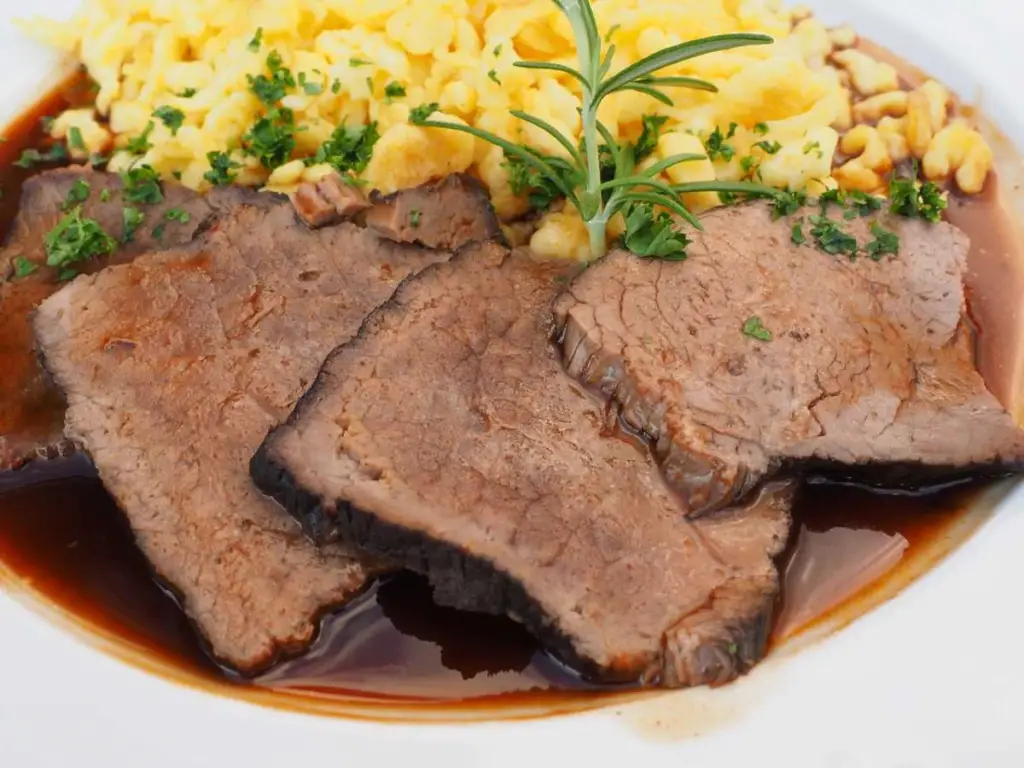
Austria’s culinary landscape boasts a rich tapestry woven from diverse influences, regional specialties, and centuries-old traditions. Forget the stereotypical schnitzel and strudel (though they are delicious!), and delve into a world of hearty stews, flavorful dumplings, and fresh local ingredients. Let’s embark on a delicious journey through traditional Austrian cuisine:
Signature Austrian Flavors
- Spice & Savory: Expect robust flavors with liberal use of paprika, herbs, and spices like caraway and juniper. Think savory goulash, smoky sausages, and aromatic stews.
- Dumpling Delights: From the comforting “Kaspressknödel” (cheesy dumplings) to the delicate “Spinatknödel” (spinach dumplings), dumplings are a staple across Austria, offering diverse textures and flavors.
- Sweet Indulgence: Austria isn’t just about savory! Mouthwatering pastries like the iconic “Sachertorte” and “Salzburger Nockerl” (sweet soufflé) offer sweet endings to any meal.
Traditional Austrian Dishes
- Tafelspitz: Boiled beef, often served with horseradish and apple sauce, is a classic Viennese dish fit for an emperor.
- Wiener Schnitzel: A thin, breaded veal cutlet fried to golden perfection, typically served with potatoes or salad.
- Gulasch: A hearty stew with Hungarian roots, featuring beef, paprika, and vegetables. Variations exist across regions.
- Schweinebraten: Roast pork, often served with dumplings, sauerkraut, and gravy, is a comforting and filling dish.
- Erdäpfelpuffer: Potato pancakes, sometimes filled with savory ingredients like cheese or mushrooms, are a popular street food and side dish.
- Käsespätzle: Cheesy noodles, a comforting dish typically found in western Austria and neighboring Germany.
- Nockerl: Light and fluffy potato dumplings, often served with gravy or sauce, are a staple dish in various regions.
- Kaiserschmarrn: A fluffy pancake, sometimes served with fruit compote or jam, is a delicious dessert.
Regional Variations
- Tirol: Hearty stews, sausages, and cheese specialties like “Käsefondue” (melted cheese fondue).
- Salzburg: Nockerl dumplings, “Salzburger Nockerln” (sweet soufflé), and influences from Bavaria.
- Vorarlberg: Käsespätzle, “Käsknöpfle” (cheese buttons), and dishes highlighting local cheeses and wines.
- Burgenland: Focus on game meat, freshwater fish, and pastries influenced by Hungarian cuisine.
Beyond the Plate
- Food & Festivals: Traditional festivals like “Almabtrieb” (cattle drives) and Christmas markets offer a chance to experience local specialties and cultural significance of food.
- Coffee Culture: Vienna boasts a vibrant coffeehouse culture, where indulging in a “Melange” (coffee drink) and pastries is a cherished ritual.
- Local Markets: Immerse yourself in bustling farmers’ markets overflowing with fresh produce and regional specialties.
A Taste of History
Austrian cuisine reflects its rich history, with influences from neighboring cultures and centuries of tradition. From hearty stews to delicate pastries, each dish tells a story of the land, its people, and their culinary heritage. So, embark on your own delicious journey through Austria, one bite at a time!
Popular Austrian Recipes

Alongside the traditional dishes, there are also popular Austrian recipes that have become beloved around the world.
Austrian Cuisine – Tafelspitz
This quintessential Viennese dish features boiled beef (traditionally the sirloin) served with horseradish, apple sauce, and vegetables. It’s a hearty and elegant centerpiece, often enjoyed on celebratory occasions.
Austrian Cuisine – Wiener Schnitzel
A thin, breaded veal cutlet fried to a golden crisp, this iconic dish is Austria’s answer to “comfort food.” Typically served with potatoes or a side salad, it’s a must-try for any visitor.
Austrian Cuisine – Gulasch
While technically Hungarian in origin, Austria has adopted its own delicious version of this paprika-infused stew. Featuring beef, vegetables, and various spices, it’s a warm and satisfying dish perfect for chilly days.
Austrian Cuisine – Käsespätzle
These cheesy noodles hail from western Austria and offer a delightful combination of textures. Soft egg noodles are coated in melted cheese and sometimes topped with crispy fried onions for an extra savory punch.
Austrian Cuisine – Kaspressknödel
These savory dumplings pack a punch of flavor. Made with cheese, bread, and herbs, they can be enjoyed as a side dish or even fried for a crispy exterior.
Austrian Cuisine – Erdäpfelpuffer
Also known as potato pancakes, these fried delights are popular street food and a versatile side dish. They can be enjoyed plain, filled with savory ingredients like cheese or mushrooms, or topped with sweet applesauce.
Austrian Cuisine – Kaiserschmarrn
This fluffy pancake, literally translated to “Emperor’s Mess,” is more like a deconstructed dessert. Torn into pieces and often served with applesauce or jam, it’s a sweet and satisfying way to end a meal.
Austrian Cuisine – Sachertorte
This iconic chocolate cake with apricot jam filling and rich chocolate glaze is a symbol of Viennese pastry tradition. Layers of moist chocolate cake and tangy apricot jam create a delicious and decadent experience.
Austrian Cuisine – Salzburger Nockerln
This dramatic soufflé is a Salzburg specialty. Sweet meringue peaks rise high before being baked and dusted with powdered sugar, offering a light and airy dessert with a delightful visual impact.
Remember, these are just a few of the many delicious dishes that Austria has to offer. Each region has its own specialties and exploring them is a wonderful way to experience the unique flavors and culinary traditions of this fascinating country.
Exploring Austrian Desserts
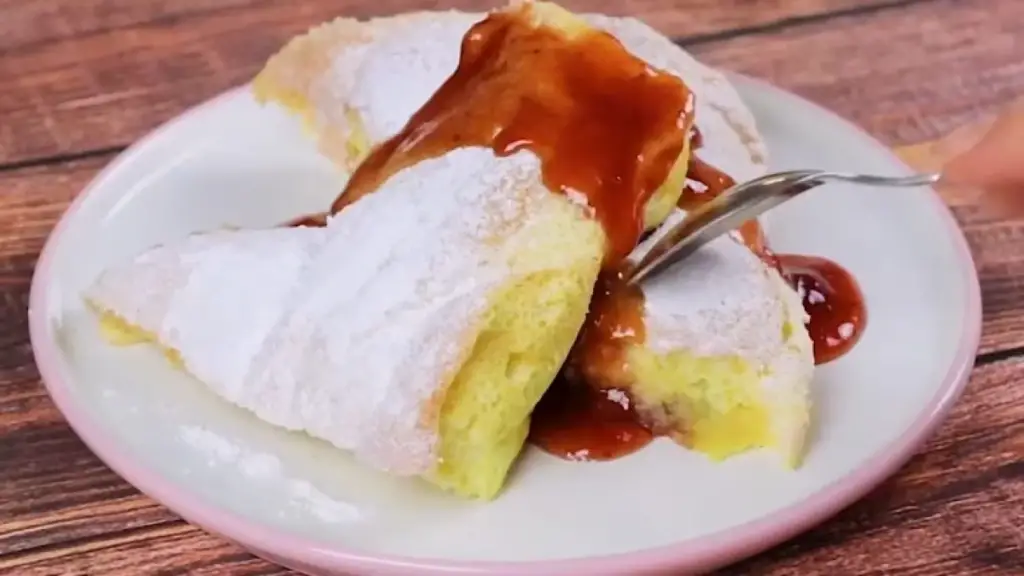
Viennese desserts may take center stage, but Austrian desserts as a whole are a true celebration of sweetness. One of the most iconic Austrian desserts is the Linzer Torte, a shortbread-like pastry filled with raspberry jam and topped with an intricate lattice pattern. This dessert has been enjoyed in Austria since the 17th century and is still a beloved treat today.
Another popular Austrian dessert is the Strudel, a delicate pastry filled with fruit, nuts, and spices. Apple Strudel is perhaps the most famous variety, but there are many other options to explore, including cherry, apricot, and even savory versions filled with cheese or cabbage.
For a truly decadent dessert, try Kaiserschmarrn. This sweet dish is made with shredded pancakes, raisins, and almonds, and is often served with a fruity compote or a dollop of whipped cream.
Whether you have a sweet tooth or prefer savory dishes, Austrian cuisine has something to offer everyone. So, why not take a culinary journey through Austria and explore the flavors and traditions that make this cuisine so unique?
Austrian Food Specialties: Beyond the Classics
While traditional dishes like Wiener Schnitzel and Tafelspitz often steal the spotlight, Austrian cuisine has much more to offer. In addition to the classics, there are numerous Austrian food specialties that are worth exploring.
These lesser-known dishes are just as delicious and showcase the many unique flavors and ingredients used in Austrian cooking.

One such dish is Serviettenknödel, a bread dumpling that is typically served with a rich beef or mushroom gravy. This hearty meal is a staple of Austrian cuisine and perfect for a cold winter night. Another lesser-known specialty is Blunzen, a type of blood sausage that is popular in many regions of Austria.
If you’re looking for something a bit lighter, try Kärntner Kasnudeln. This pasta dish is filled with a mixture of cheeses and served with butter and a sprinkle of chives. It’s a favorite in the Carinthia region and a great option for vegetarians.
| Austrian Food Specialties: | Description: |
|---|---|
| Serviettenknödel | A bread dumpling served with beef or mushroom gravy |
| Blunzen | A type of blood sausage popular in many regions of Austria |
| Kärntner Kasnudeln | A cheese-filled pasta dish popular in the Carinthia region |
These Austrian food specialties are just a few examples of the many delicious options available in Austrian cuisine. If you have the opportunity to visit Austria, be sure to try some of these authentic Austrian dishes to truly appreciate the diverse and flavorful food culture of this beautiful country.
Exploring Austrian Food Culture

One of the most fascinating aspects of Austrian cuisine is the deep-rooted food culture that has evolved over the years. The importance of seasonal produce and the rituals surrounding mealtime are just a few examples of how Austrian food culture has influenced the way Austrians cook and eat today.
Popular Austrian recipes like Wiener Schnitzel and Tafelspitz are steeped in Austrian cooking traditions that have been passed down through generations. These dishes are not only a reflection of Austrian history and culture, but also of the diverse culinary influences that have shaped Austrian cuisine over the years.
Whether you’re enjoying a hearty bowl of Goulash in the mountainous region of Tyrol or indulging in a slice of Sachertorte in Vienna, the culinary traditions of Austria are truly unique and offer a glimpse into the country’s rich cultural heritage.
Austrian Cuisine – Seasonal Produce
In Austria, the use of seasonal produce is highly valued. From the strawberries of early summer to the cabbage and root vegetables of autumn, Austrian cuisine celebrates the flavors of each season.
During the spring season, Austrians enjoy dishes featuring fresh asparagus, ramps, and artichokes. In summer, they savor the sweet taste of berries, peaches, and apricots. Fall brings an abundance of pumpkins, apples, and pears, while winter offers hearty root vegetables like turnips, parsnips, and potatoes.
By cooking with seasonal produce, Austrians are able to highlight the natural flavors of each ingredient and create dishes that are simple, yet bursting with flavor.
Austrian Cuisine – Mealtime Rituals
In Austria, mealtime is a cherished part of the day and reflects the importance of family and community. Traditionally, lunch is the main meal of the day and is often eaten with family or colleagues.
A typical Austrian lunch includes a soup or salad, followed by a hearty main course like Schnitzel or Goulash, and finished off with a sweet dessert like Apfelstrudel or Kaiserschmarrn.
Dinner is usually a lighter meal and is often eaten later in the evening. Popular dinner dishes include cold cuts, cheese, and bread, or a simple soup or stew.
Exploring Austria’s Ingredients: The Flavors of Austria
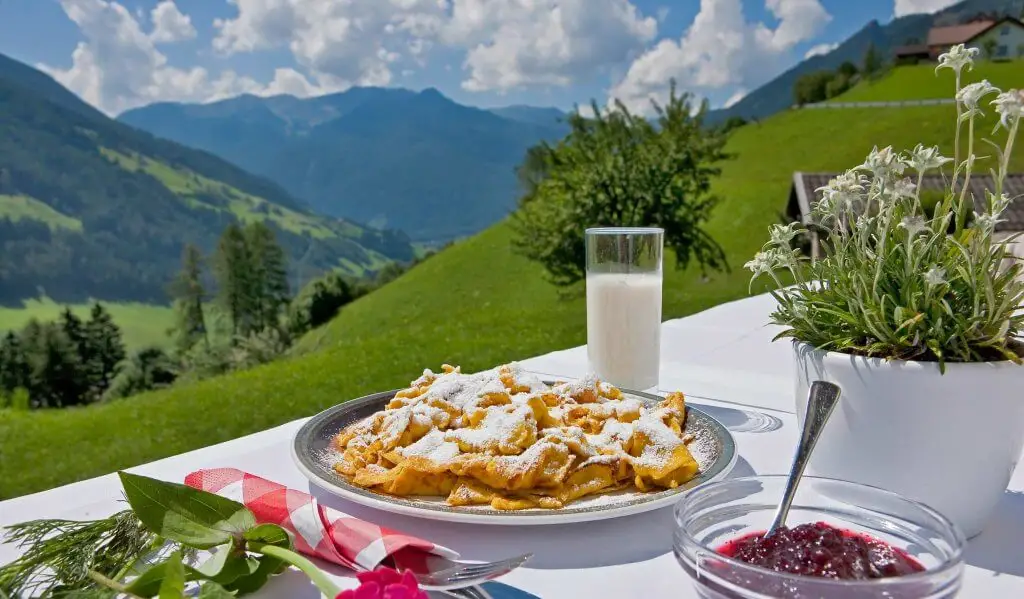
Austrian cuisine is characterized by a rich variety of flavors, with a focus on quality and regional specialties. The fertile plains and valleys offer a bounty of fresh produce, while the Alpine regions provide high-quality dairy products and meats.
Key ingredients in Austrian cuisine include:
- Meats: Pork, beef, and poultry are staples, with dishes like Wiener Schnitzel being internationally recognized.
- Dairy: Austria’s cheeses, butters, and creams are central to its cooking, contributing to the rich flavor profiles of dishes.
- Vegetables: Root vegetables like potatoes, carrots, and turnips are commonly used, especially in hearty stews and soups.
- Fruits: Apples, plums, and berries are used in desserts such as strudels and compotes.
- Spices and Herbs: While not as spicy as other cuisines, Austrian dishes often include a blend of sweet and savory spices like caraway, paprika, and dill.
- Grains: Wheat and rye are important for bread-making, a staple in the Austrian diet.
- Sweets: Chocolate, nuts, and jams are key ingredients in the confectionery for which Austria is famous.
These ingredients are the essence of Austrian dishes, which are often simple but made with a high level of craftsmanship and a deep appreciation for the quality of the raw ingredients.
Tips for Cooking Authentic Austrian Cuisine Dishes

If you’re looking to recreate the savory flavors of authentic Austrian dishes in your own kitchen, there are a few key elements to keep in mind. From essential ingredients to cooking methods, here are my top tips for cooking popular Austrian recipes that are both delicious and authentic:
Use Quality Ingredients
Authentic Austrian cuisine relies on high-quality, fresh ingredients to create bold and complex flavors. When shopping for ingredients, look for local and seasonal produce, as well as artisanal cheeses and meats. Using quality ingredients will elevate your dishes and give them an authentic Austrian taste.
Don’t Skimp on the Butter
Butter is a staple in Austrian cooking traditions, adding richness and flavor to dishes. When cooking Austrian recipes, don’t be afraid to use generous amounts of butter. You can also experiment with flavored butter, such as herb or garlic butter, to add an extra layer of flavor.
Master the Art of Cooking Schnitzel
Wiener Schnitzel is one of the most iconic Austrian dishes, and mastering the art of cooking schnitzel is an important part of authentic Austrian cooking. To ensure a crispy and golden crust, use high-quality breadcrumbs and make sure your oil is hot enough before adding the schnitzel. Pound the meat until it is thin and uniform to ensure even cooking and a tender texture.
Experiment with Spices
Austrian cooking traditions often feature a variety of spices, from paprika to caraway seeds. Experiment with different spices to create unique and flavorful dishes. Be sure to grind your own spices for the best flavor.
Don’t Forget the Sauces
Sauces are an important part of many popular Austrian recipes. From creamy mushroom sauce to tangy cranberry sauce, the right sauce can take a dish from good to outstanding. Make your own sauces from scratch to ensure the freshest and most flavorful results.
How Healthy is Austrian Food?
Austrian cuisine offers a delightful blend of flavors, influenced by its rich cultural heritage. Let’s explore the health aspects of Austrian food, backed by references:
The Austrian Food Pyramid

The Austrian Food Pyramid, developed under the leadership of Univ.-Prof. Dr. Michael Kunze, provides valuable guidance for a balanced diet. It consists of six food groups and one beverage group. Here are the key recommendations:
- Fatty, Sweet, and Salty Foods: Sweets, pastries, high-sugar, and high-fat fast foods should be consumed infrequently—no more than one serving per day. The World Health Organization (WHO) recommends limiting free sugar intake to 50 grams per day (about 10 teaspoons) and salt consumption to 5-6 grams daily.
- Fish, Meat, Sausage, and Eggs: Aim for at least 1-2 portions of fish (approximately 150 g each) per week. Fatty sea fish like mackerel, salmon, tuna, and herring are excellent sources of omega-3 fatty acids. Additionally, consume a maximum of 3 servings of low-fat meat or sausages weekly (300-450 g per week).
Dairy and Milk Products
- Include dairy products in your diet. Opt for two servings of “white” (e.g., yogurt, buttermilk, cottage cheese) and one serving of “yellow” (cheese). These provide high-quality protein, calcium, and essential vitamins (B2, B12, and A).
Challenges and Recommendations
- Saturated Fatty Acids: Austrians consume more saturated fatty acids than recommended by the FAO (12.7% of total calorie intake versus the recommended 10%).
- Salt Intake: Austrian men consume 9 grams of salt per day, while women consume 8 grams (FAO recommends 5 grams daily).
- Obesity Rates: Monitoring and addressing obesity rates remain crucial for overall health.
In summary, Austrian food, when chosen wisely, can contribute to a healthy lifestyle. Remember to enjoy regional and seasonal produce, and make informed choices based on the Austrian Food Pyramid. 🍽️🇦🇹
References
- Austrian Food Pyramid provided by AGES (Austrian Agency for Health and Food Safety)
- borgenproject.org
- fao.org
- eurohealthnet-magazine.eu
- globalnutritionreport.org
- en.wikipedia.org
Exploring Austrian Wine and Beer Pairings
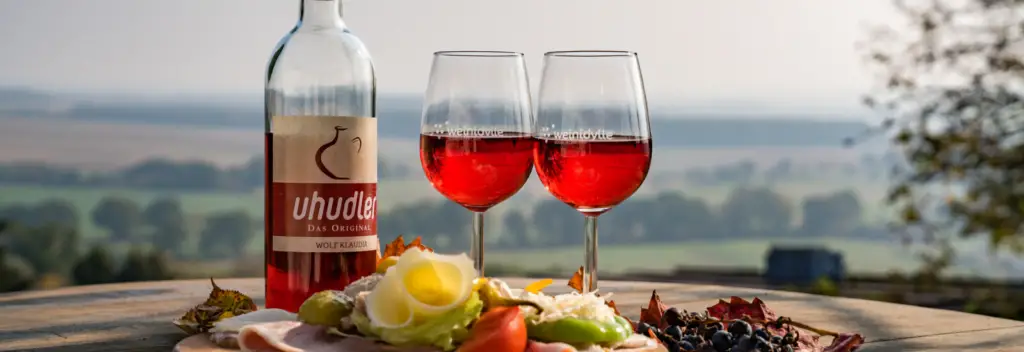
What better way to complement a delicious Austrian meal than with the perfect wine or beer pairing? As I mentioned earlier, the geographical location of Austria plays a significant role in shaping its unique cuisine.
Similarly, the country’s climate and soil are ideal for wine and beer production, which has resulted in a rich and diverse selection of beverages to pair with popular Austrian recipes.
When it comes to wine, Austria is known for its white varieties, particularly Grüner Veltliner and Riesling. These wines pair well with lighter dishes like fish, salads, and vegetable-based dishes. On the other hand, red wine lovers can opt for a Zweigelt or Blaufränkisch, which pair well with heartier dishes like beef, lamb, and game meats.
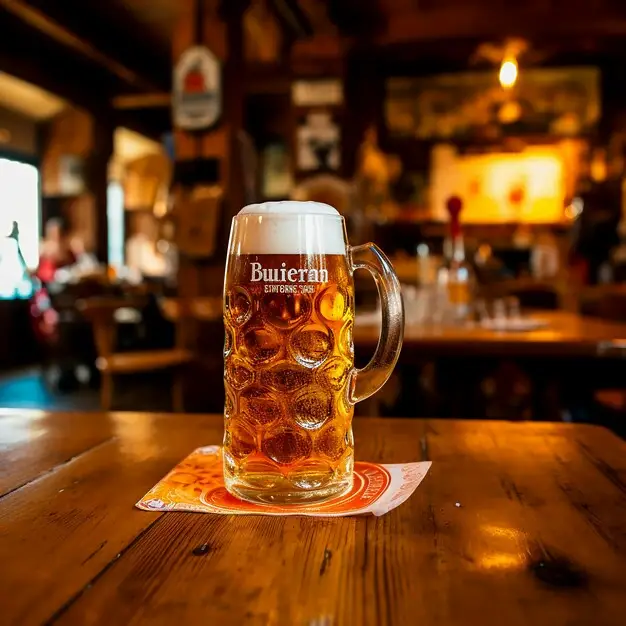
For beer enthusiasts, Austrian beer is a must-try. The country is known for its lagers, which are typically lighter and crisper than other European beer styles. Some popular Austrian beer brands to try include Stiegl, Gösser, and Ottakringer. These beers pair well with traditional Austrian dishes like schnitzel, sausage, and hearty stews.
In addition to wine and beer, Austria also produces a variety of schnapps and liqueurs that make for excellent after-dinner drinks. Some popular choices include Obstler, a fruit brandy made from apples or pears, and Mozart liqueur, which combines chocolate, vanilla, and fruit flavors.
Overall, when it comes to pairing Austrian food specialties with beverages, the options are endless. Whether you prefer wine, beer, or spirits, there is a perfect pairing to complement any dish on your plate. So don’t be afraid to ask your server for recommendations or experiment with different combinations at home.
Austrian Recipes you can try at Home
The delicious recipes from this beautiful country are well worth including in your cooking armory.
Austrian Food – Gugelhupf

History and Background
Welcome to my cozy kitchen, dear food enthusiasts! Today, we’re whisking up a delightful Austrian classic—the Gugelhupf. Picture this: snow-capped Alps, charming villages, and the aroma of freshly baked cakes wafting through the air. That’s the essence of the Gugelhupf. 🏔️🍰
Originating in Austria, this cake has graced countless tables during afternoon coffee gatherings and lazy Sunday breakfasts. It’s the kind of treat that warms your heart and brings generations together. So, let’s dive into the sweet history of our beloved Gugelhupf!
Austrian Food – Gugelhupf Ingredients
Cake:
- 170 g (3/4 cup) unsalted butter
- 4 eggs, separated
- 330 g (2 1/2 cups) all-purpose flour
- 170 ml (2/3 cup) milk
- 330 g (2 1/2 cups) confectioner’s sugar (plus more for decoration)
- 1 tsp vanilla extract
- 3/4 tsp baking powder
- 3-4 tsp cocoa powder (for the marble effect)
Austrian Food – Gugelhupf The Recipe
Preheat and Prep
- Preheat your oven to 170°C (340°F).
- Grease a Gugelhupf or Bundt® pan with melted butter.
Creamy Butter Mix
- Whisk the butter with the egg yolks until foamy.
- Add the confectioner’s sugar and stir until creamy.
- Flavor it up with vanilla extract or sugar.
Fluffy Egg Whites
- Beat the egg whites until stiff peaks form.
Flour Power
- Sift together the flour and baking powder.
- Mix half of the flour into the butter mixture.
- Add the milk and combine.
- Stir in the remaining flour.
Marbling Magic
- Pour less than half of the batter into the prepared pan.
- Add cocoa powder to the remaining batter and mix well.
- Pour the darker batter on top of the lighter one.
- Use a wooden spoon handle or fork to create a beautiful marble texture by swirling through the batter.
Bake and Decorate
- Bake for 50 to 55 minutes until golden brown.
- Let the cake cool for a few minutes, then gently remove it from the pan.
- Dust with extra confectioner’s sugar for that irresistible finish.
Serving Size and Nutritional Info
- Serves: 6-8 cake lovers
- Cooking Time: Approximately 70 minutes (including prep and baking)
- Calories per Serving: Approximately 350 calories (may vary based on portion size and variations)
Now, gather your loved ones, brew a cup of coffee or tea, and slice into this tender Gugelhupf. It’s a taste of Austria’s heart and soul! ☕🇦🇹
Austrian Food – Nockerl Dumplings

Austrian Food – Salzburger Nockerln
History and Background: Austrian cuisine is a delightful blend of flavors influenced by its Central European location. Nockerl Dumplings, also known as Nockerln, are a traditional Austrian dish often enjoyed as a side or main course. Originating from the alpine regions of Austria, these dumplings are a comforting and hearty dish with a history dating back centuries.
Austrian Food – Nockerl Dumplings Ingredients:
- 2 cups of potatoes, boiled and mashed
- 1 cup of all-purpose flour
- 2 large eggs
- 1/2 cup of breadcrumbs
- Salt and pepper to taste
- Nutmeg, grated
- Butter for serving
Austrian Food – Nockerl Dumplings Recipe:
Prepare the Dough
- In a large mixing bowl, combine the boiled and mashed potatoes with all-purpose flour.
- Add the eggs, breadcrumbs, salt, pepper, and a touch of grated nutmeg to the mixture.
- Knead the ingredients together until a smooth, elastic dough forms.
Shape the Dumplings
- Divide the dough into small portions and roll each into a cylinder shape on a floured surface.
- Cut the cylinders into bite-sized pieces to form the dumplings.
Cook the Nockerl Dumplings
- Bring a large pot of salted water to a boil.
- Carefully drop the dumplings into the boiling water and cook until they rise to the surface.
Serve and Enjoy
- Once the dumplings are cooked, remove them with a slotted spoon and place them in a serving dish.
- Drizzle melted butter over the dumplings for a rich flavor.
- Garnish with fresh herbs if desired.
Serving Size: 4 people
Cooking Time: Approximately 30 minutes
Nutritional Information (per serving):
- Calories: 250 kcal
- Protein: 7g
- Carbohydrates: 45g
- Fat: 5g
- Fiber: 3g
Enjoy this authentic taste of Austria with Nockerl Dumplings, a dish that reflects the heartiness and warmth of Austrian culinary traditions!
Austrian Food – Käsespätzle (Cheese Noodles)

A Culinary Journey Through Austria: The Rich Heritage of Käsespätzle
In my cozy kitchen, I’m bringing a taste of Austria to your table with a beloved comfort food – Käsespätzle, or Cheese Noodles. This hearty dish traces its roots to the picturesque Alpine region of Austria, where the combination of egg noodles and melted cheese creates a warm and satisfying meal. Traditionally prepared in mountain huts, Käsespätzle embodies the essence of Austrian cuisine, marrying simplicity with indulgence.
Austrian Food – Ingredients for Käsespätzle (Serves 4):
- 2 cups all-purpose flour
- 4 large eggs
- 1/2 cup milk
- 1 teaspoon salt
- 1/2 teaspoon nutmeg
- 1 cup grated Emmental cheese
- 1 cup grated Gruyère cheese
- 1/2 cup caramelized onions
- 1/4 cup butter
- Salt and pepper to taste
- Chopped chives for garnish
Austrian Food – Käsespätzle Recipe
Making the Spätzle Dough: a. In a large bowl, whisk together the flour, eggs, milk, salt, and nutmeg until a smooth batter forms. b. Allow the batter to rest for 30 minutes.
Cooking the Spätzle: a. Boil salted water in a large pot. b. Spoon the spätzle batter into the boiling water or use a spätzle maker. Cook until the noodles float to the surface, then drain.
Assembling Käsespätzle: a. Preheat the oven to 375°F (190°C). b. In a baking dish, layer half of the spätzle, followed by half of the grated Emmental and Gruyère cheese, and caramelized onions. Repeat the layers. c. Dot the top with butter and bake for 20-25 minutes until the cheese is melted and bubbly. d. Garnish with chopped chives and season with salt and pepper.
Estimated Cooking Time: 1 hour (including resting time)
Nutritional Information (Per Serving):
- Calories: 450 kcal
- Protein: 18g
- Carbohydrates: 35g
- Fat: 25g
- Fiber: 2g
Bring the warmth of Austrian kitchens to your home with this delightful Käsespätzle recipe. It’s a true taste of Alpine comfort that will surely become a favorite in your household. Enjoy!
Austrian Food – Käsknöpfle (Cheese Buttons)

Austrian Food – Käsknöpfle (Cheese Buttons)
History and Background: Austrian cuisine is a delightful blend of rich flavors and hearty dishes, and one iconic comfort food that stands out is Käsknöpfle, or Cheese Buttons. Hailing from the picturesque Alpine region of Vorarlberg, this dish has been a staple for generations.
Traditionally, it was created as a simple yet satisfying meal for the hardworking farmers of the area. Over time, Käsknöpfle has evolved into a beloved dish enjoyed by people across Austria and beyond.
The combination of tender pasta and creamy melted cheese makes it a hearty and delicious comfort food.
Austrian Food –Käsknöpfle Ingredients
- 2 cups all-purpose flour
- 4 large eggs
- 1 cup milk
- 1/2 teaspoon salt
- 2 cups grated Emmental cheese (or any Alpine-style cheese)
- 1/2 cup unsalted butter
- Freshly ground black pepper, to taste
- Chives, chopped (for garnish)
Austrian Food – Käsknöpfle (Cheese Buttons) Recipe:
1. Prepare the Dough:
- In a large mixing bowl, combine the flour, eggs, milk, and salt.
- Mix until a smooth batter forms. The consistency should be thicker than pancake batter.
2. Boil the Water:
- Bring a large pot of salted water to a boil.
3. Form the Buttons:
- Using a spaetzle maker or a colander with large holes, press the dough directly into the boiling water. The dough will form small, irregularly shaped buttons.
4. Cook the Buttons:
- Allow the buttons to cook for 2-3 minutes or until they float to the surface.
- Remove the buttons with a slotted spoon and place them in a large bowl.
5. Add Cheese:
- Sprinkle the grated Emmental cheese over the hot Käsknöpfle, allowing it to melt and coat the buttons.
6. Finish with Butter and Seasoning:
- In a separate pan, melt the butter over medium heat until it turns golden brown.
- Pour the browned butter over the Käsknöpfle, ensuring even coverage.
- Season with freshly ground black pepper to taste.
7. Garnish and Serve:
- Sprinkle chopped chives over the dish for a burst of freshness.
- Serve the Käsknöpfle hot and enjoy the comforting flavors of this Austrian classic.
Serving Size: 4 people
Cooking Time: Approximately 30 minutes
Nutritional Information (per serving):
- Calories: 550 kcal
- Protein: 18g
- Fat: 28g
- Carbohydrates: 52g
- Fiber: 2g
- Sugar: 3g
- Sodium: 500mg
Austrian Food – Eintopf

History and Background: Austrian cuisine is a delightful fusion of flavors influenced by the country’s rich history and diverse regions. Eintopf, a hearty one-pot stew, is a classic Austrian dish that has been cherished for generations.
Originating from the Alpine regions, Eintopf was traditionally cooked in a single pot over an open fire, making it a practical and comforting meal for cold winters.
Austrian Food – Eintopf Ingredients
- 1 lb beef stew meat, cubed
- 1 cup diced onions
- 2 cloves garlic, minced
- 2 carrots, peeled and sliced
- 2 potatoes, peeled and diced
- 1 leek, cleaned and sliced
- 1 cup green beans, trimmed and chopped
- 1 cup celery, sliced
- 1 bay leaf
- 1 tsp caraway seeds
- 1 tsp dried thyme
- Salt and pepper to taste
- 4 cups beef broth
- 2 cups water
- 2 tbsp vegetable oil
Austrian Food – Eintopf Recipe
1. Prepare the Ingredients:
- Cube the beef stew meat.
- Dice the onions and garlic.
- Peel and slice carrots and potatoes.
- Clean and slice the leek.
- Trim and chop green beans.
- Slice celery.
2. Sear the Beef:
- In a large pot, heat vegetable oil over medium-high heat.
- Add beef cubes, season with salt and pepper, and brown on all sides.
3. Saute Aromatics:
- Add diced onions and minced garlic to the pot.
- Cook until onions are translucent.
4. Add Vegetables:
- Incorporate carrots, potatoes, leek, green beans, and celery into the pot.
- Stir in caraway seeds, thyme, and bay leaf.
5. Pour in Liquids:
- Pour beef broth and water into the pot.
- Bring the mixture to a boil.
6. Simmer and Season:
- Reduce heat to low and simmer for 1 to 1.5 hours, allowing flavors to meld.
- Season with additional salt and pepper to taste.
7. Serve and Enjoy:
- Remove the bay leaf before serving.
- Ladle the Eintopf into bowls and enjoy this hearty Austrian stew.
Serving Size: 6 people
Cooking Time: 1.5 hours
Nutritional Information (per serving):
- Calories: 350
- Protein: 25g
- Fat: 12g
- Carbohydrates: 30g
- Fiber: 6g
- Sugar: 5g
- Sodium: 800mg
Austrian Food – Kaspressknödel

Welcome back to my cozy kitchen, fellow food enthusiasts! Today, we’re diving into the heart of Austrian cuisine with a beloved dish known as Kaspressknödel. These flavorful cheese dumplings have a rich history rooted in the Alpine region, where hearty, comforting meals are a way of life.
Originating from the Tyrol region, Kaspressknödel is a culinary gem that showcases the robust flavors and traditions of Austrian cooking.
Austrian Food – Kaspressknödel Ingredients
- 2 cups stale bread, cubed
- 1 cup milk
- 1 onion, finely chopped
- 2 tablespoons butter
- 1 1/2 cups mountain cheese, grated
- 2 eggs
- 1/4 cup fresh chives, chopped
- Salt and pepper to taste
- 1/2 cup all-purpose flour
- 2 tablespoons vegetable oil
Estimated Calories (per serving): 320 Protein: 12g, Carbohydrates: 28g, Fat: 18g, Fiber: 2
Austrian Food – Kaspressknödel Recipes
1. Prepare the Bread Mixture
- In a large bowl, soak the stale bread cubes in milk until they are soft and well-moistened.
- Sauté the finely chopped onion in butter until golden brown. Add the onions to the soaked bread mixture.
2. Mix in the Cheese and Eggs
- Incorporate the grated mountain cheese into the bread mixture, ensuring an even distribution.
- Crack the eggs into the mixture and add fresh chives. Season with salt and pepper to taste.
- Combine all ingredients thoroughly, creating a cohesive, slightly sticky dough.
3. Form the Dumplings
- With lightly floured hands, shape the mixture into palm-sized dumplings, forming a round and compact shape.
4. Cook the Dumplings
- Bring a large pot of salted water to a gentle boil.
- Carefully place the dumplings into the boiling water and let them simmer for about 15-20 minutes or until they float to the surface.
5. Pan-Fry for Crispy Texture
- In a separate pan, heat vegetable oil over medium heat.
- Once the dumplings are cooked, transfer them to the pan and fry until golden brown on all sides, creating a crispy exterior.
6. Serve and Enjoy
- Plate the Kaspressknödel hot, accompanied by a side salad or your favorite dipping sauce.
Now, you’re ready to savor the delightful taste of Austria with these Kaspressknödel! Gather your loved ones as this recipe serves four, making it perfect for a cozy family dinner or a small gathering. Enjoy the warmth and comfort of traditional Austrian cuisine right in your own home. Prost!
Austrian Food – Gulasch

Hey, foodies! Today, let’s take a culinary journey to the heart of Austria with a classic dish that warms the soul – Gulasch. Hailing from the picturesque region of Vienna, Gulasch has deep roots in Central European cuisine.
This hearty stew, traditionally made with tender beef, onions, and a rich paprika-infused broth, embodies the comforting flavors of Austria’s culinary heritage.
Austrian Food – Gulasch Ingredients
- 2 pounds stewing beef, cubed
- 2 tablespoons vegetable oil
- 2 large onions, finely chopped
- 3 cloves garlic, minced
- 2 tablespoons sweet paprika
- 1 teaspoon caraway seeds
- 1 teaspoon marjoram
- 1 teaspoon salt
- 1/2 teaspoon black pepper
- 2 tablespoons tomato paste
- 4 cups beef broth
- 2 large potatoes, peeled and cubed
- 1 red bell pepper, diced
- Chopped fresh parsley for garnish
Estimated Calories (per serving): 420 Protein: 35g, Carbohydrates: 30g, Fat: 18g, Fiber: 4g
Austrian Food – Gulasch Recipes
1. Brown the Beef
- Heat vegetable oil in a large pot over medium-high heat.
- Add the cubed beef and brown on all sides. This step enhances the flavor of the Gulasch.
2. Sauté Onions and Garlic
- Toss in the finely chopped onions and minced garlic, cooking until they become soft and translucent.
3. Add Spices and Tomato Paste
- Stir in the sweet paprika, caraway seeds, marjoram, salt, and black pepper. Cook for an additional 2-3 minutes.
- Add tomato paste and mix well, letting it caramelize slightly.
4. Pour in Beef Broth
- Pour the beef broth into the pot, scraping the bottom to release any flavorful bits.
- Bring the mixture to a boil, then reduce the heat to low, covering the pot. Allow it to simmer for about 1.5 to 2 hours, or until the beef is tender.
5. Add Potatoes and Bell Pepper
- Introduce the cubed potatoes and diced red bell pepper to the pot.
- Continue simmering until the potatoes are cooked through and the stew reaches your desired thickness.
6. Garnish and Serve
- Sprinkle chopped fresh parsley over the Gulasch for a burst of color and freshness.
- Serve this comforting dish hot, perhaps with a side of crusty bread to soak up the flavorful broth.
This Gulasch recipe serves six, making it perfect for a family feast or for leftovers to enjoy throughout the week. Embrace the warmth and taste of Austria in your kitchen. Guten Appetit!
Austrian Food – Schweinebraten (Roast Pork)

Austrian Food – Schweinebraten (Roast Pork)
Greetings, kitchen adventurers! Today, we’re diving into the heart of Austrian cuisine with a mouthwatering classic – Schweinebraten, or Roast Pork. Hailing from the beautiful valleys of Austria, this dish reflects the rich culinary history of the region.
Traditionally cooked in cozy Alpine homes, Schweinebraten brings families together with its succulent pork, crispy skin, and aromatic spices.
Austrian Food – Schweinebraten (Roast Pork) Ingredients
- 4 pounds pork shoulder or pork loin
- Salt and black pepper, to taste
- 1 tablespoon caraway seeds
- 1 tablespoon marjoram
- 2 tablespoons vegetable oil
- 2 onions, sliced
- 4 cloves garlic, minced
- 1 cup chicken or vegetable broth
- 1 cup dry white wine
- 2 tablespoons flour (for gravy)
Estimated Calories (per serving): 450 Protein: 40g, Carbohydrates: 10g, Fat: 28g, Fiber: 2g
Austrian Food – Schweinebraten (Roast Pork) Recipes
1. Prep and Season the Pork
- Preheat your oven to 350°F (175°C).
- Score the pork skin with a sharp knife, creating a diamond pattern. Season the pork generously with salt and black pepper.
2. Infuse Flavor with Herbs
- Rub caraway seeds and marjoram onto the scored skin, allowing the flavors to penetrate the meat.
- Let the seasoned pork sit at room temperature for about 30 minutes.
3. Sear the Pork
- In an oven-safe pan, heat vegetable oil over medium-high heat.
- Sear the pork on all sides until golden brown. This step locks in the juices and enhances the flavor.
4. Add Aromatics and Liquid
- Scatter sliced onions and minced garlic around the pork in the pan.
- Pour chicken or vegetable broth and white wine into the pan for a flavorful bath for the roast.
5. Roast in the Oven
- Place the pan in the preheated oven and roast the pork for approximately 2.5 to 3 hours or until the internal temperature reaches 145°F (63°C).
- Baste the pork with the pan juices every 30 minutes to keep it moist and flavorful.
6. Make Gravy
- Once the pork is done, transfer it to a cutting board to rest.
- In a saucepan, make a quick gravy by whisking flour into the pan juices and cooking until thickened.
7. Slice and Serve
- Carve the Schweinebraten into thick slices and drizzle with the savory gravy.
- Serve this delightful dish with your favorite sides – perhaps some roasted vegetables or creamy mashed potatoes.
This Schweinebraten recipe serves eight, making it perfect for a festive family dinner or a gathering with friends. Elevate your kitchen with the comforting aromas of Austrian tradition. Mahlzeit!
Austrian Food – Erdäpfelpuffer

Austrian Food – Erdäpfelpuffer (Potato Pancakes)
Welcome to my kitchen, food enthusiasts! Today, we’re whisking ourselves away to the charming land of Austria with a delightful dish known as Erdäpfelpuffer, or Potato Pancakes.
Originating from the rural corners of Austria, these crispy and golden delights have been a beloved comfort food for generations. Let’s dive into the simplicity and heartiness of Erdäpfelpuffer!
Austrian Food – Erdäpfelpuffer Ingredients
- 4 large potatoes, peeled and grated
- 1 small onion, finely grated
- 2 eggs
- 1/4 cup all-purpose flour
- Salt and pepper to taste
- Vegetable oil for frying
- Applesauce or sour cream for serving
Estimated Calories (per serving): 180 Protein: 5g, Carbohydrates: 30g, Fat: 5g, Fiber: 3g
Austrian Food – Erdäpfelpuffer Recipes
1. Grate Potatoes and Onion
- Peel and grate the potatoes using a box grater.
- Finely grate the onion and add it to the grated potatoes.
2. Squeeze out Excess Moisture
- Using a clean kitchen towel or cheesecloth, squeeze out as much moisture as possible from the grated potatoes and onion.
3. Mix in Eggs and Flour
- In a large bowl, combine the squeezed potatoes and onion.
- Add eggs, flour, salt, and pepper. Mix until you have a cohesive batter.
4. Heat Oil in a Pan
- In a skillet, heat vegetable oil over medium-high heat. You’ll need enough oil to cover the bottom of the pan.
5. Fry the Potato Pancakes
- Drop spoonfulls of the batter into the hot oil, flattening them slightly with the back of the spoon.
- Fry until the edges are golden brown, approximately 3-4 minutes per side.
6. Drain and Serve
- Place the Erdäpfelpuffer on a paper towel-lined plate to drain any excess oil.
- Serve the potato pancakes hot, with a side of applesauce or sour cream for dipping.
This Erdäpfelpuffer recipe makes about 12 pancakes, perfect for sharing with family and friends. Enjoy the crispy goodness of Austria right in your own kitchen! Guten Appetit!
Austrian Food – Spinatknödel

Austrian Food – Spinatknödel (Spinach Dumplings)
Hey there, fellow foodies! Today, we’re diving into the heart of Austria with a classic comfort dish – Spinatknödel, or Spinach Dumplings. Originating from the lush Alpine region, these pillowy delights reflect the hearty and wholesome nature of Austrian cuisine.
Let’s embark on a culinary adventure and whip up these delightful Spinatknödel in the cozy confines of our kitchens.
Austrian Food – Spinatknödel Ingredients
- 1 pound fresh spinach, washed and chopped
- 2 cups bread cubes
- 1 cup milk
- 1 small onion, finely chopped
- 2 tablespoons butter
- 2 eggs
- 1/2 cup grated Parmesan cheese
- 1/2 cup all-purpose flour
- Salt and nutmeg to taste
- Bread crumbs for coating
- Butter for serving
Estimated Calories (per serving): 220 Protein: 9g, Carbohydrates: 25g, Fat: 10g, Fiber: 4g
Austrian Food – Spinatknödel Recipes
1. Prepare the Spinach Mixture
- In a pot of boiling water, blanch the chopped spinach for 2 minutes. Drain and let it cool.
- In a separate bowl, soak the bread cubes in milk until soft. Squeeze out excess liquid.
2. Sauté Onions in Butter
- In a pan, sauté finely chopped onions in butter until they become golden brown.
3. Combine Ingredients
- In a large mixing bowl, combine the blanched spinach, soaked bread cubes, sautéed onions, eggs, grated Parmesan cheese, flour, salt, and nutmeg. Mix well to form a dough.
4. Shape the Dumplings
- With floured hands, shape the mixture into golf ball-sized dumplings. Roll each dumpling in breadcrumbs to coat evenly.
5. Steam the Dumplings
- Place the Spinatknödel in a steamer basket, making sure to leave space between each dumpling.
- Steam for approximately 20 minutes or until the dumplings are firm and cooked through.
6. Serve with Butter
- Once cooked, transfer the Spinatknödel to a serving dish.
- Melt some butter and drizzle it over the dumplings before serving.
This Spinatknödel recipe yields about 8 dumplings, perfect for a cozy family dinner or gathering with friends. Embrace the flavors of Austria and enjoy the wholesome goodness of Spinatknödel in your home! Guten Appetit!
Austrian Food – Saibling Müllerin with Pistachios and Dill (Pan-Fried Trout)

History and Background:
Austria, nestled in the heart of Europe, boasts a culinary tapestry that reflects its diverse cultural influences. Our Pan-Fried Trout with Pistachios and Dill pays homage to the country’s love for fresh ingredients and intricate flavors.
Originating from the Austrian Alps, this dish captures the essence of the region’s crystal-clear streams teeming with trout, combined with the richness of pistachios and the aromatic touch of dill.
Austrian Food – Saibling Müllerin Ingredients
- Fresh Trout Fillets (4):
- Ensure the trout fillets are boneless and cleaned.
- Crushed Pistachios (1/2 cup):
- Use high-quality pistachios for a rich and nutty flavor.
- Breadcrumbs (1/4 cup):
- Adds a delightful crunch to the pan-fried trout.
- Butter (2 tablespoons):
- Enhances the richness and flavor.
- Olive Oil (2 tablespoons):
- Adds a depth of flavor and aids in cooking.
- Salt and Pepper:
- Season the trout fillets to taste.
- Lemon (1):
- Sliced for a refreshing garnish.
- Fresh Dill:
- Chopped for an aromatic garnish.
Austrian Food – Saibling Müllerin Recipe
Servings: 4 people
Cooking Time: Approximately 25 minutes
- Prepare Trout Fillets:
- Pat the trout fillets dry with paper towels.
- Season both sides with salt and pepper.
- Pistachio and Breadcrumb Coating:
- In a shallow dish, combine crushed pistachios and breadcrumbs.
- Dredge each trout fillet in the mixture, ensuring an even coating.
- Pan-Fry Trout:
- In a skillet, heat butter and olive oil over medium-high heat.
- Add the coated trout fillets and cook for 3-4 minutes on each side or until golden brown and cooked through.
- Serve:
- Transfer the pan-fried trout to a serving platter.
- Garnish with lemon slices and chopped fresh dill.
- Enjoy:
- Dive into the exquisite flavors of Pan-Fried Trout with Pistachios and Dill, a culinary journey to the heart of Austrian cuisine.
Nutritional Information:
- Calories per Serving: 340 kcal
- Protein: 24g
- Carbohydrates: 15g
- Fat: 22g
- Fiber: 3g
- Sugar: 1g
Experience the taste of Austria with this delightful Pan-Fried Trout, blending the freshness of trout with the nuttiness of pistachios and the aromatic touch of dill.
Austrian Food – Fischsuppe (Fish Soup)

History and Background:
Delve into the heart of Austrian culinary traditions with Fischsuppe, a comforting Fish Soup that reflects the country’s historical love for hearty and nourishing dishes. Originating from the diverse regions of Austria, this soup pays homage to the bounty of freshwater fish found in its lakes and rivers.
Over the years, Fischsuppe has become a staple, showcasing the country’s dedication to wholesome, flavorsome meals.
Austrian Food – Fischsuppe Ingredients
Servings: 6 people
Cooking Time: Approximately 40 minutes
- White Fish Fillets (1 lb):
- Choose a mild-flavored white fish like cod or haddock, cut into bite-sized chunks.
- Onion (1):
- Finely chop the onion for a savory base.
- Carrots (2):
- Dice the carrots for a sweet and colorful addition.
- Celery Stalks (2):
- Chop the celery for a refreshing crunch.
- Garlic (2 cloves):
- Mince the garlic for a robust flavor.
- Diced Tomatoes (1 can – 14 oz):
- Opt for canned diced tomatoes for convenience and flavor.
- Fish or Vegetable Broth (6 cups):
- Choose a high-quality broth for a rich base.
- White Wine (1/2 cup):
- Adds depth and complexity to the soup.
- Bay Leaf (1):
- Enhances the aromatic profile of the soup.
- Dried Thyme (1 teaspoon):
- Adds a hint of earthy warmth.
- Salt and Pepper:
- Season to taste for a balanced flavor.
- Fresh Parsley:
- Chopped for a vibrant garnish.
- Lemon Wedges:
- For a citrusy touch when serving.
Austrian Food – Fischsuppe Recipe:
- Saute Aromatics:
- In a large pot, sauté the chopped onion, carrots, celery, and garlic until softened.
- Add Tomatoes and Broth:
- Pour in the diced tomatoes, fish or vegetable broth, and white wine. Stir well.
- Season and Simmer:
- Add the bay leaf, dried thyme, salt, and pepper. Allow the soup to simmer for 20-25 minutes.
- Add Fish:
- Gently add the chunks of white fish to the simmering soup. Cook for an additional 10-15 minutes until the fish is cooked through.
- Serve:
- Remove the bay leaf and ladle the Fischsuppe into bowls. Garnish with fresh parsley and serve with lemon wedges.
- Enjoy:
- Dive into the comforting flavors of Fischsuppe, a taste of Austrian warmth and tradition.
Nutritional Information:
- Calories per Serving: 180 kcal
- Protein: 18g
- Carbohydrates: 15g
- Fat: 6g
- Fiber: 3g
- Sugar: 5g
Warm up your home with the goodness of Fischsuppe, a hearty Fish Soup that brings the flavors of Austria to your table.
Austrian Food – Salzburger Nockerln

Austrian Food – Salzburger Nockerln
Hey, foodies! Today, we’re taking a delicious journey to the picturesque region of Salzburg in Austria with a classic dessert called Salzburger Nockerln. This sweet treat, resembling fluffy mountains, is steeped in history and is a favorite among locals and visitors alike. Let’s dive into the story behind this delightful dish!
Ingredients
- 3 large eggs, separated
- 1/2 cup granulated sugar
- 1 teaspoon vanilla extract
- 1/2 cup all-purpose flour
- 1/2 cup milk
- Pinch of salt
- Confectioners’ sugar for dusting
Preparation – Ingredients
- Separate the egg whites and yolks into two different bowls.
- In the bowl with egg yolks, add granulated sugar and vanilla extract. Mix until creamy.
- Gradually incorporate the flour and milk into the egg yolk mixture, creating a smooth batter.
- In the bowl with egg whites, add a pinch of salt and whip until stiff peaks form.
- Gently fold the whipped egg whites into the batter until well combined.
Recipe – Salzburger Nockerln: Serves 4 | Estimated Cooking Time: 20 minutes | Nutritional Information: (per serving)
- Preheat the Oven: Set your oven to 375°F (190°C).
- Shape the Nockerln: On a baking sheet lined with parchment paper, spoon dollops of the batter, forming three distinct peaks to resemble mountains.
- Bake to Perfection: Place the baking sheet in the preheated oven and bake for 10-12 minutes or until the peaks turn golden brown.
- Dust with Sugar: Once out of the oven, dust the Salzburger Nockerln with confectioners’ sugar for a sweet finishing touch.
- Serve and Enjoy: Plate the Nockerln immediately and serve them hot. They are perfect on their own or accompanied by a fruit compote or vanilla sauce.
Nutritional Information:
- Calories: 180 per serving
- Protein: 5g
- Fat: 3g
- Carbohydrates: 35g
- Fiber: 1g
Experience the enchanting taste of Salzburg with these airy, sweet peaks of joy. Salzburger Nockerln is a dessert that brings a piece of Austrian tradition to your home. Enjoy every fluffy bite! Guten Appetit!
Austrian Food – Serviettenknödel

Austrian Food – Serviettenknödel
Hey, fellow food enthusiasts! Today, let’s embark on a culinary journey to Austria with a classic dish called Serviettenknödel. These delightful dumplings have a story that dates back through generations, originating in the heart of Austrian homes. Join me as we explore the history and charm behind this comforting dish!
History and Background
Serviettenknödel, or napkin dumplings, are a staple in Austrian cuisine. Originating from the Alpine region, these dumplings have been cherished for centuries, making their way from traditional family kitchens to modern dining tables. The name comes from the dumplings being shaped and steamed in a napkin, creating a unique and tender texture.
Austrian Food – Serviettenknödel Ingredients
- 4 cups stale white bread, cubed
- 1 cup milk
- 2 tablespoons butter
- 1 small onion, finely chopped
- 2 eggs
- 1/4 cup fresh parsley, chopped
- Salt and pepper to taste
Preparation – Ingredients:
- Prepare Bread Cubes:
- Cube the stale white bread into small pieces.
- Soak Bread in Milk:
- In a large bowl, soak the bread cubes in milk until softened.
- Sauté Onions:
- In a pan, sauté finely chopped onions in butter until golden brown.
- Mix Ingredients:
- In a mixing bowl, combine soaked bread, sautéed onions, eggs, chopped parsley, salt, and pepper. Mix until well combined.
- Shape and Wrap:
- Divide the mixture into portions and shape them into dumplings. Wrap each dumpling tightly in a clean kitchen napkin.
Recipe – Serviettenknödel: Serves 4 | Estimated Cooking Time: 30 minutes | Nutritional Information: (per serving)
- Steam the Dumplings:
- In a large pot with a steamer, bring water to a simmer.
- Place the wrapped dumplings in the steamer and cook for 20-25 minutes until firm.
- Unwrap and Slice:
- Carefully unwrap the dumplings.
- Slice them into rounds and serve hot.
Nutritional Information:
- Calories: 250 per serving
- Protein: 8g
- Fat: 10g
- Carbohydrates: 30g
- Fiber: 2g
Experience the warmth and tradition of Austria in your own kitchen with these comforting Serviettenknödel. Perfect for family dinners, these dumplings are a delicious nod to the heart of Austrian culinary heritage. Guten Appetit!
Austrian Food – Blunzen

A Deep Dive into Blunzen: History, Background, and Region
Blunzen, also known as Blutwurst, is a traditional Austrian blood sausage with a rich and fascinating history. Dating back to the Middle Ages, this savory dish was a way to utilize every part of the animal, ensuring nothing went to waste.
Blunzen is primarily associated with Carinthia, a southern state in Austria, known for its stunning alpine landscapes and vibrant culinary scene. Each region within Carinthia boasts its own unique take on Blunzen, with variations in spices, textures, and fillings.
Today, Blunzen remains a beloved dish enjoyed year-round, often served during festive occasions like Easter and Christmas. So, are you ready to embark on a delicious journey and explore the flavors of this unique Austrian specialty?
Austrian Food – Blunzen Recipe (Serves 4-6)
- 1 kg (2.2 lbs) Blunzen sausage (available at most European butcher shops or online)
- 1 medium onion, diced
- 2 cloves garlic, minced
- 1 tbsp vegetable oil
- 1/2 cup beef broth
- 1/4 cup apple cider vinegar
- 1 tbsp brown sugar
- 1 tsp ground caraway seeds
- 1/2 tsp ground allspice
- 1/4 tsp ground ginger
- Salt and pepper to taste
- Chopped fresh parsley, for garnish (optional)
Austrian Food – Blunzen Recipe (Serves 4-6)
- Prep the Blunzen: If your Blunzen comes encased in skin, carefully peel it off and discard. Cut the sausage into bite-sized pieces.
- Sauté the Aromatics: Heat oil in a large skillet over medium heat. Add the onion and cook until softened, about 5 minutes. Stir in the garlic and cook for another minute.
- Simmer the Blunzen: Add the Blunzen pieces to the skillet and cook for 5-7 minutes, stirring occasionally, until heated through.
- Deglaze and Season: Pour in the beef broth, apple cider vinegar, and brown sugar. Bring to a simmer and cook for 10 minutes, or until the sauce thickens slightly. Stir in the caraway seeds, allspice, and ginger. Season with salt and pepper to taste.
- Garnish and Serve: Remove from heat and garnish with chopped parsley, if desired. Serve hot with mashed potatoes, sauerkraut, or your favorite side dish.
Cooking Time: Approximately 30 minutes
Nutritional Information: (approximate per serving)
- Calories: 350
- Fat: 25g
- Protein: 20g
- Carbohydrates: 10g
Tips:
- For a richer flavor, add a tablespoon of bacon fat to the skillet along with the oil.
- If you prefer a smoother texture, mash the Blunzen pieces before adding them to the skillet.
- Blunzen leftovers can be stored in an airtight container in the refrigerator for up to 3 days. Reheat gently in a pan or microwave.
Ready to Savor the Blunzen Experience?
So, there you have it! This Blunzen recipe is a delicious and authentic way to experience a taste of Austrian tradition. With its unique blend of savory flavors and textures, Blunzen is sure to become a new favorite at your table. So, why not gather your ingredients, put on your apron, and embark on a culinary adventure to the heart of Austria? Guten Appetit!
Austrian Food – Kärntner Kasnudeln

History and Background
Kärntner Kasnudeln, also known as Carinthian cheese dumplings, hail from the picturesque region of Carinthia (Kärnten) in Austria. Nestled in the southern part of the country, Carinthia is known for its stunning alpine landscapes, pristine lakes, and hearty cuisine.
These delightful dumplings have been a staple in Carinthian households for generations, combining comfort and flavor.
Ingredients
- Dough:
- 2 cups all-purpose flour
- 1 large egg
- 1/2 cup water
- A pinch of salt
- Filling:
- 1 cup farmer’s cheese (or ricotta)
- 1 small onion, finely chopped
- 1 tablespoon butter
- Salt and pepper to taste
- A dash of nutmeg (optional)
- Sauce:
- 1/2 cup butter
- 1/2 cup bread crumbs
- Freshly chopped parsley for garnish
The Recipe
Prepare the Dough
- In a mixing bowl, combine the flour, egg, water, and a pinch of salt.
- Knead the dough until smooth and elastic. Let it rest for about 30 minutes.
Make the Filling
- Sauté the finely chopped onion in butter until translucent.
- Mix the sautéed onion with the farmer’s cheese (or ricotta).
- Season with salt, pepper, and a dash of nutmeg.
Assemble the Dumplings
- Roll out the dough into a thin sheet.
- Cut out circles (about 3 inches in diameter).
- Place a spoonful of the cheese filling in the center of each circle.
- Fold the dough over the filling, creating half-moon shapes. Seal the edges well.
Cook the Dumplings
- Bring a large pot of salted water to a gentle simmer.
- Carefully drop the dumplings into the water.
- Cook for about 10-12 minutes or until they float to the surface.
Prepare the Sauce
- In a separate pan, melt the butter.
- Add the bread crumbs and toast them until golden brown.
Serve
- Remove the dumplings from the water using a slotted spoon.
- Plate the Kärntner Kasnudeln, drizzle with the buttery bread crumb sauce, and sprinkle with freshly chopped parsley.
- Serve hot and enjoy the comforting flavors of Carinthia!
Serving Size and Nutritional Information
- Serves: 4 people
- Cooking Time: Approximately 45 minutes
- Calories per Serving: Approximately 350 calories (may vary based on portion size and variations)
- Note: Adjust serving size and nutritional information based on individual preferences and dietary needs. 🍽️🧀
Austrian Cuisine – Wiener Schnitzel (a breaded and fried veal cutlet)

Wiener Schnitzel is one of Austria’s most famous and beloved dishes. It consists of a breaded and fried veal or pork cutlet, which is typically pounded thin to achieve a tender and thin schnitzel. The name “Wiener” refers to Vienna, the capital of Austria, and it is often enjoyed throughout the country. Wiener Schnitzel is a symbol of Austrian cuisine and is known for its crispy, golden exterior and juicy, flavorful interior.
Austrian Cuisine – Wiener Schnitzel Ingredients
- 4 veal or pork cutlets (about 4-6 ounces or 120-180g each)
- Salt and black pepper, to taste
- All-purpose flour, for dredging
- 2 large eggs
- 2 cups fine dry breadcrumbs
- Vegetable oil or clarified butter (ghee) for frying
- Lemon wedges, for serving
- Parsley sprigs, for garnish
- Optional: capers, anchovies, or lingonberry jam for serving
Austrian Cuisine – Wiener Schnitzel Instructions
Prepare the Cutlets
If the cutlets are not already thin, you can pound them to a thickness of about 1/4 inch (6mm). This can be done by placing the cutlets between sheets of plastic wrap or wax paper and using a meat mallet or rolling pin to gently flatten them.
Season the Cutlets
Season the cutlets with salt and black pepper on both sides.
Dredge in Flour
Place some all-purpose flour on a plate. Dredge each cutlet in the flour, making sure to shake off any excess.
Prepare the Egg Wash
In a shallow dish, beat the eggs with a pinch of salt.
Coat with Breadcrumbs
On another plate, spread out the fine dry breadcrumbs. Dip each cutlet into the beaten eggs, ensuring they are fully coated.
Then, transfer them to the breadcrumbs and coat both sides generously with breadcrumbs. Press the breadcrumbs onto the cutlets to make sure they adhere well.
Heat the Oil or Ghee
In a large, deep skillet or pan, heat vegetable oil or clarified butter (ghee) over medium-high heat. You’ll need enough oil to submerge the schnitzels halfway.
The oil is hot enough when a breadcrumb dropped into it sizzles and browns quickly.
Fry the Wiener Schnitzels
Carefully place the breaded cutlets into the hot oil. Fry them for 2-4 minutes on each side, or until they turn golden brown and crispy. The exact cooking time depends on the thickness of the cutlets and the heat of the oil. Avoid overcrowding the pan; you may need to cook the schnitzels in batches.
Drain and Rest the Wiener Schnitzel
Remove the schnitzels with a slotted spatula or tongs and place them on a plate lined with paper towels to drain excess oil. Allow them to rest for a minute.
Serve the Wiener Schnitzel
Serve the Wiener Schnitzel hot, garnished with lemon wedges, fresh parsley sprigs, and any optional condiments you like, such as capers, anchovies, or lingonberry jam. It’s traditionally served with a side of potato salad or a simple cucumber salad.
Wiener Schnitzel is a classic Austrian dish known for its crispy and golden exterior and tender, flavorful interior. Enjoy it as a comforting and delicious main course.
Austrian Cuisine – Tafelspitz (boiled beef with horseradish and root vegetables)
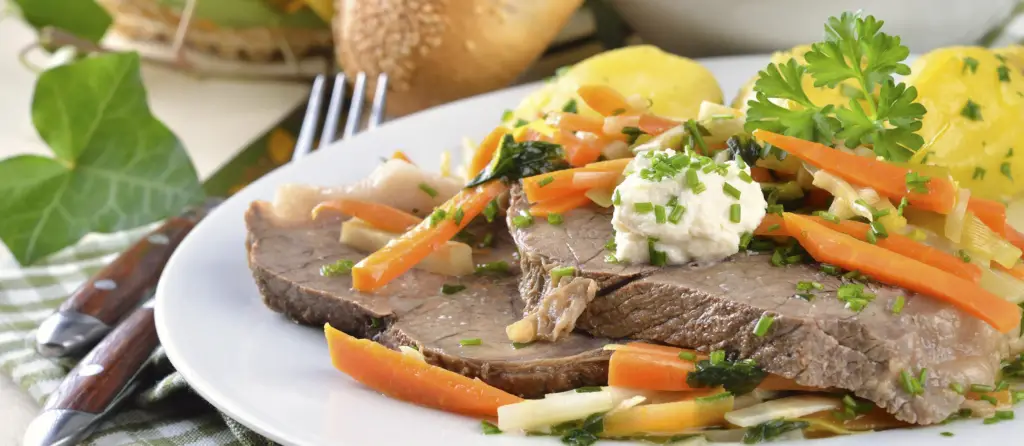
Tafelspitz is a classic Austrian dish that features boiled beef served with various accompaniments. It’s considered one of Austria’s national dishes and has a long history dating back to the Habsburg monarchy. The name “Tafelspitz” translates to “tip of the table” in German, signifying its status as a special and prestigious meal. The dish typically consists of a tender cut of beef simmered with root vegetables and served with traditional Austrian sides.
Austrian Cuisine – Tafelspitz Ingredients
Tafelspitz:
- 2.5-3 pounds (1.2-1.4 kg) beef rump or sirloin
- 2-3 beef marrow bones (optional, for added flavor)
- 1 onion, peeled and halved
- 2-3 cloves of garlic, peeled
- 2 carrots, peeled and roughly chopped
- 1 leek, cleaned and roughly chopped
- 1 small celery root (celeriac), peeled and roughly chopped
- 1 parsnip, peeled and roughly chopped
- A bouquet garni (a bundle of fresh herbs such as parsley, thyme, and bay leaves)
- Salt and black pepper, to taste
Accompaniments:
- Boiled potatoes, whole or mashed
- Horseradish sauce (made with grated horseradish root and sour cream)
- Apple sauce
- Creamed spinach
- Root vegetables from the broth (served as a side dish)
- Chopped fresh herbs for garnish (such as chives or parsley)
Austrian Cuisine – Tafelspitz Instructions
Preparing the Tafelspitz
Start by tying the beef with kitchen twine: This helps it hold its shape during cooking. If you have beef marrow bones, you can also tie them to the meat with the kitchen twine.
In a large pot, place the beef, marrow bones (if using), onion, garlic, and bouquet garni. Add enough cold water to cover the meat and bones.
Bring the water to a boil over high heat. Skim off any foam or impurities that rise to the surface.
Reduce the heat to low, cover the pot, and let the beef simmer gently for about 2.5 to 3 hours, or until it’s tender. Check the meat periodically and skim the surface to keep the broth clear.
About 30 minutes before the meat is done, add the chopped vegetables (carrots, leek, celery root, and parsnip) to the pot. This adds flavor to the broth and creates a delicious side dish.
Once the meat is tender, remove it from the pot and keep it warm. You can wrap it in aluminum foil and place it in a warm oven (around 150°C or 300°F).
Serving Tafelspitz
Slice the beef into thin slices, removing the twine.
Serve the Tafelspitz with accompaniments: Traditionally, it’s served with boiled potatoes, horseradish sauce, apple sauce, and creamed spinach. You can also serve the root vegetables from the broth as a side.
Garnish with chopped fresh herbs such as chives or parsley for added flavor and presentation.
Tafelspitz is a hearty and delicious Austrian dish that combines tender boiled beef with a variety of flavorful accompaniments. It’s a wonderful representation of Austrian culinary traditions and is sure to be a hit at your table. Enjoy!
Austrian Cuisine – Eierschwammerlgulasch (a mushroom stew served with bread dumplings)

Eierschwammerlgulasch, also known as Chanterelle Mushroom Goulash, is a traditional Austrian dish. It’s a hearty, savory stew made with chanterelle mushrooms and typically served with dumplings, noodles, or bread. The earthy and slightly nutty flavor of chanterelle mushrooms pairs wonderfully with the rich, flavorful goulash sauce. This dish is especially popular during the mushroom-harvesting season in Austria.
Austrian Cuisine – Eierschwammerlgulasch Ingredients
- 500g (approximately 1 pound) fresh chanterelle mushrooms, cleaned and trimmed
- 1 large onion, finely chopped
- 2 cloves garlic, minced
- 2 tablespoons vegetable oil
- 1 tablespoon butter
- 2 tablespoons sweet paprika
- 1 teaspoon caraway seeds (optional)
- 1 tablespoon all-purpose flour
- 2 cups vegetable or mushroom broth
- Salt and black pepper, to taste
- 1 bay leaf
- A pinch of thyme
- 1/2 cup sour cream or crème fraîche (optional, for a creamier goulash)
- Chopped fresh parsley, for garnish
- Dumplings, noodles, or crusty bread, for serving
Austrian Cuisine – Eierschwammerlgulasch Instructions
Clean and Trim the Chanterelle Mushrooms
Gently clean the chanterelle mushrooms with a brush or damp paper towel to remove any dirt. Trim the ends of the stems, and if the mushrooms are large, you can slice them in half.
Sauté Onions and Garlic
Heat the vegetable oil and butter in a large, heavy-bottomed pot or Dutch oven over medium heat. Add the finely chopped onions and minced garlic. Sauté until they become soft and translucent, about 5-7 minutes.
Add Paprika and Caraway Seeds
Stir in the sweet paprika and caraway seeds (if using). Cook for a minute to bloom the spices.
Cook Mushrooms
Add the cleaned chanterelle mushrooms to the pot. Cook and stir them for about 5-7 minutes, or until they release their liquid and start to brown.
Create Roux
Sprinkle the all-purpose flour over the mushrooms and stir well to create a roux. Cook for another 2-3 minutes to remove the raw taste of the flour.
Add Broth
Gradually pour in the vegetable or mushroom broth while stirring to create a smooth sauce.
Season and Simmer
Season the goulash with salt, black pepper, bay leaf, and a pinch of thyme. Bring the mixture to a gentle simmer.
Simmer and Thicken
Let the goulash simmer for about 20-25 minutes, stirring occasionally, until the sauce thickens and the mushrooms are tender.
Finish with Sour Cream (Optional)
If you prefer a creamier goulash, stir in the sour cream or crème fraîche and cook for an additional 5 minutes.
Serve
Serve the Eierschwammerlgulasch hot, garnished with freshly chopped parsley, and alongside dumplings, noodles, or crusty bread.
Eierschwammerlgulasch is a comforting and delicious Austrian dish, especially enjoyed during the mushroom season. The combination of tender chanterelle mushrooms and flavorful goulash sauce is a treat for the palate. Enjoy this hearty stew with your choice of accompaniment.
Pair with Austrian Wine or Beer
To complete your authentic Austrian dining experience, be sure to pair your dishes with the perfect Austrian wine or beer. From crisp white wines to full-bodied reds, there are a variety of options to choose from. Alternatively, try pairing your dishes with a cold Austrian beer for a refreshing and satisfying complement to your meal.
By following these tips and techniques, you can cook authentic Austrian dishes that are both delicious and true to tradition. Whether you’re making Wiener Schnitzel or Tafelspitz, be sure to embrace the rich and diverse world of Austrian cuisine in your own kitchen.
Austrian Cuisine – Sachertorte

Sachertorte is a famous Austrian dessert that’s a true classic of Austrian pastry. It is a rich and decadent chocolate cake with a layer of apricot jam and a smooth, glossy chocolate glaze.
Sachertorte was created by Franz Sacher in 1832, and it has since become one of Austria’s most beloved and iconic culinary treasures. It’s often served as a special treat on special occasions.
Austrian Cuisine – Sachertorte Ingredients
Chocolate Cake:
- 140g (5 oz) dark chocolate (at least 50% cocoa)
- 140g (5 oz) unsalted butter
- 110g (4 oz) granulated sugar
- 6 large eggs, separated into yolks and whites
- 140g (5 oz) all-purpose flour
- 1/2 teaspoon baking powder
- A pinch of salt
Apricot Jam Filling:
- 200g (7 oz) apricot jam (preferably all-fruit, not too sweet)
Chocolate Glaze:
- 200g (7 oz) dark chocolate
- 200ml (about 2/3 cup) heavy cream
- 1 tablespoon unsalted butter
Garnish:
- Whipped cream
Austrian Cuisine – Sachertorte Instructions
Preparing the Chocolate Cake
Preheat the oven to 180°C (350°F). Grease and flour a 9-inch (23cm) round cake pan.
Melt the Chocolate and Butter: In a heatproof bowl, melt the dark chocolate and unsalted butter together. You can do this over a double boiler or in the microwave in 20-30 second increments. Once melted, allow it to cool slightly.
Whip the Egg Yolks and Sugar: In a separate bowl, beat the egg yolks and granulated sugar together until the mixture is pale and fluffy.
Combine with Chocolate Mixture: Gently fold the egg yolk and sugar mixture into the melted chocolate and butter mixture.
Sift Flour, Baking Powder, and Salt: Sift the all-purpose flour, baking powder, and a pinch of salt over the chocolate mixture. Gently fold them in until well combined.
Beat the Egg Whites: In another clean, dry bowl, whip the egg whites until they form stiff peaks.
Fold in the Egg Whites: Carefully fold the whipped egg whites into the chocolate mixture until there are no visible streaks of egg white. Be gentle to maintain the cake’s lightness.
Bake: Pour the cake batter into the prepared cake pan and bake in the preheated oven for about 45-50 minutes, or until a toothpick inserted into the center comes out clean.
Cool: Allow the cake to cool in the pan for a few minutes, then transfer it to a wire rack to cool completely.
Assembling and Glazing the Sachertorte
Cut the Cake: Once the cake is completely cooled, use a long knife to carefully cut it in half horizontally, creating two layers.
Prepare Chocolate Glaze: In a saucepan, heat the heavy cream until it’s almost boiling. Remove from heat and add the dark chocolate and unsalted butter. Stir until the mixture is smooth and glossy.
Spread Apricot Jam: Heat the apricot jam until it’s smooth, then spread it over the bottom layer of the cake. Place the top layer of the cake on top of the jam.
Glaze the Cake: Pour the chocolate glaze over the top of the cake, allowing it to flow down the sides. Use a spatula to smooth the glaze, covering the entire cake evenly.
Chill: Allow the glaze to set and the cake to cool in the refrigerator for a few hours or overnight.
Serving Sachertorte
Serve: Slice and serve Sachertorte with a dollop of whipped cream on the side. It’s a delightfully rich and decadent dessert that’s perfect for special occasions.
Sachertorte is an iconic Austrian dessert that’s celebrated for its intense chocolate flavor and the delightful contrast of the apricot jam. Enjoy it with a cup of coffee or tea for a truly Austrian experience.
Austrian Cuisine – Classic Apple Strudel
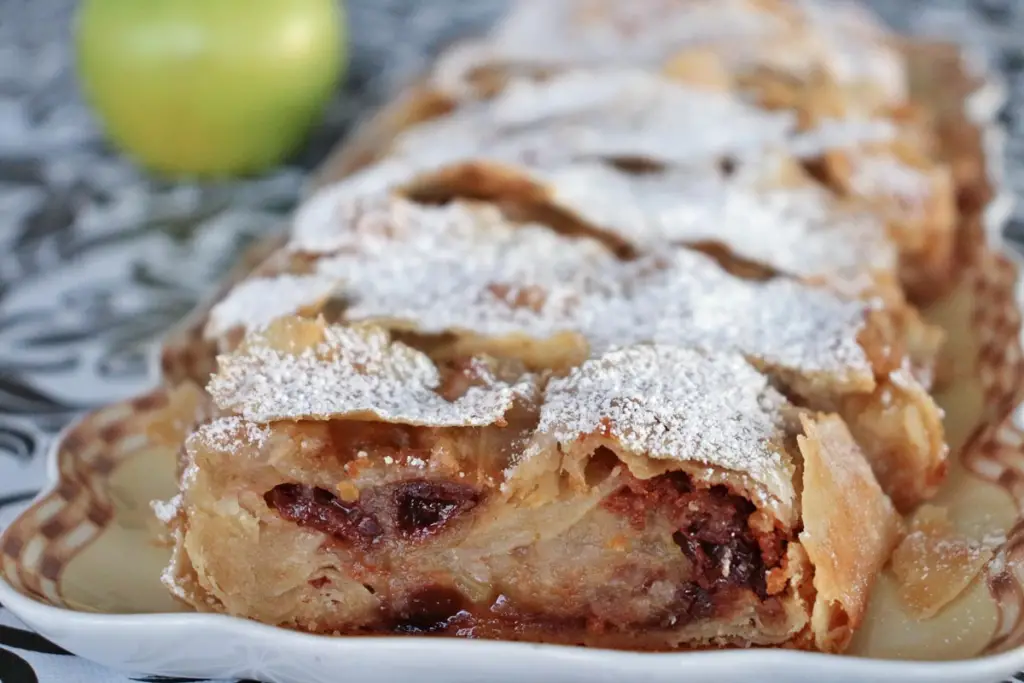
Apple Strudel, known as “Apfelstrudel” in German, is a classic and beloved Austrian pastry that has become popular worldwide. It is a flaky, sweet, and spiced pastry filled with thinly sliced apples, sugar, cinnamon, and sometimes raisins. The strudel dough is paper-thin and is traditionally stretched and rolled out by hand to achieve its delicate texture. Apple strudel is often served warm, dusted with powdered sugar, and accompanied by a scoop of vanilla ice cream or a dollop of whipped cream.
Austrian Cuisine – Classic Apple Strudel Ingredients
Strudel Dough:
- 2 cups all-purpose flour
- 1/4 cup vegetable oil
- 1/2 cup lukewarm water
- 1/2 teaspoon salt
- 1 tablespoon white vinegar
Filling:
- 4-5 medium-sized apples (such as Granny Smith or Golden Delicious), peeled, cored, and thinly sliced
- 1/2 cup granulated sugar
- 1 teaspoon ground cinnamon
- 1/2 cup bread crumbs
- 1/2 cup raisins (optional)
- Zest of 1 lemon
- 2-3 tablespoons melted butter
Brushing:
- 2-3 tablespoons melted butter
Dusting:
- Powdered sugar
Austrian Cuisine – Classic Apple Strudel Instructions
Prepare the Strudel Dough
- In a mixing bowl, combine the all-purpose flour and salt
- In a separate small bowl, mix the lukewarm water and white vinegar
- Gradually add the water-vinegar mixture and vegetable oil to the flour.
- Knead the dough until it is smooth and elastic. If the dough is too sticky, add a bit more flour. Form the dough into a ball and brush it with a little oil. Let it rest for about 30 minutes in a warm place, covered with a clean kitchen towel.
Prepare the Filling
In a mixing bowl, combine the thinly sliced apples, granulated sugar, ground cinnamon, bread crumbs, raisins (if using), and lemon zest.
Toss everything together until the apples are coated evenly.
Stretch and Assemble the Strudel
- Preheat your oven to 375°F (190°C).
- On a clean kitchen towel or a floured surface, roll out the dough into a large, thin sheet.
- Then, gently stretch it with your hands. The goal is to make the dough as thin as possible without tearing it. You should be able to see your fingers through the stretched dough.
- Brush the entire surface of the dough with melted butter.
- Pile the prepared apple filling onto the dough, leaving about 2 inches of the edge free from the filling.
- Fold in the short sides of the dough and then start rolling up the strudel from the long side, using the towel to help you.
- Transfer the rolled strudel onto a parchment paper-lined baking sheet, seam side down.
- Brush the top of the strudel with more melted butter.
Bake and Serve
- Bake the apple strudel in the preheated oven for about 35-40 minutes, or until it is golden brown and the apples are tender.
- Remove the strudel from the oven and let it cool for a few minutes.
- Dust the strudel with powdered sugar.
- Slice and serve warm, either on its own or with a scoop of vanilla ice cream or a dollop of whipped cream.
Enjoy your homemade Austrian Classic Apple Strudel, a delightful dessert with a perfect balance of sweetness and warm spices.
Austrian Cuisine – Linzer Torte
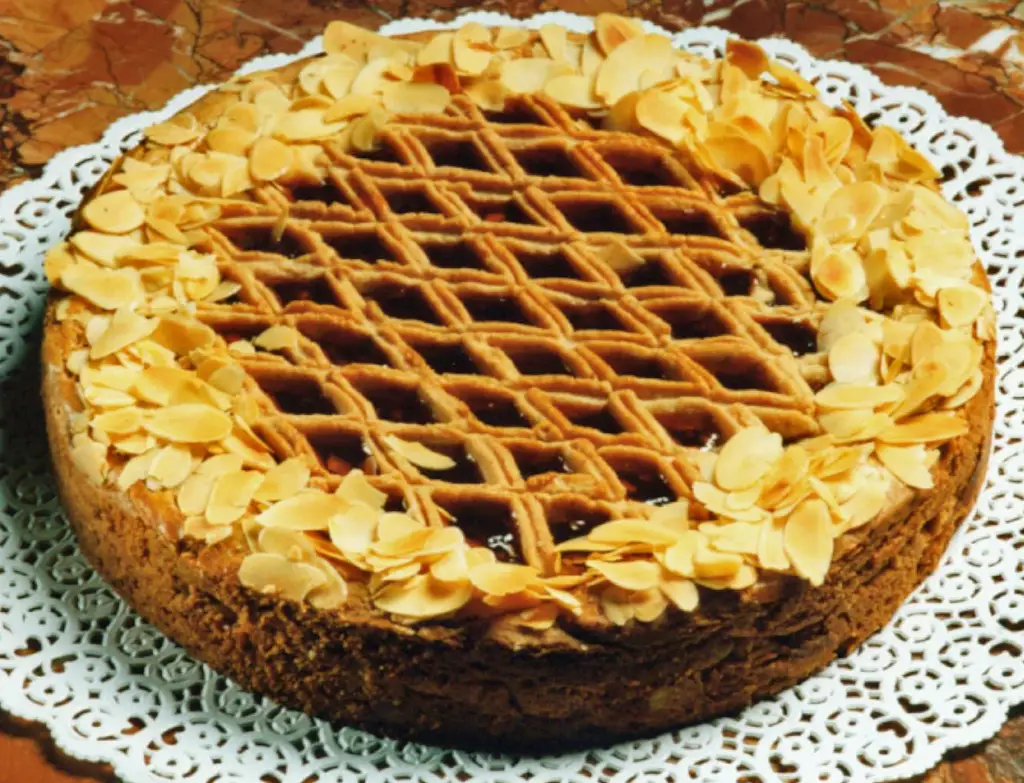
The Linzer Torte is one of Austria’s most famous and beloved desserts. It’s a classic pastry that originated in the city of Linz and is known for its distinctive lattice design on top. This delicious dessert consists of a buttery and crumbly pastry crust filled with a layer of fruit preserves, often raspberry or red currant, and topped with a lattice pattern.
The Linzer Torte is traditionally dusted with powdered sugar and served with a dollop of whipped cream. It’s a delightful treat that has been enjoyed for centuries.
Austrian Cuisine – Linzer Torte Ingredients
Pastry Dough:
- 1 3/4 cups all-purpose flour
- 1/2 cup ground almonds or almond meal
- 1/2 teaspoon ground cinnamon
- 1/4 teaspoon ground cloves
- 1/4 teaspoon salt
- 1 cup unsalted butter, softened
- 1/2 cup granulated sugar
- 1 large egg
- 1 teaspoon vanilla extract
- Zest of 1 lemon
Filling:
- 1 1/4 cups raspberry or red currant preserves
Topping:
- Powdered sugar, for dusting
Austrian Cuisine – Linzer Torte Instructions
Prepare the Pastry Dough
- In a mixing bowl, combine the all-purpose flour, ground almonds, ground cinnamon, ground cloves, and salt.
- In another bowl, cream the softened unsalted butter and granulated sugar together until it’s light and fluffy.
- Add the egg, vanilla extract, and lemon zest to the butter and sugar mixture. Mix until well combined.
- Gradually add the dry ingredient mixture to the wet ingredients. Mix until the dough comes together. Be careful not to overmix.
- Divide the dough into two equal portions, shape them into disks, wrap them in plastic wrap, and refrigerate for at least 30 minutes.
Assemble the Linzer Torte
- Preheat your oven to 350°F (175°C).
- Roll out one of the pastry dough disks on a floured surface. It should be about 1/8 inch (3mm) thick.
- Transfer the rolled dough to a 9-inch (23cm) round tart or springform pan. Press it into the pan, trimming any excess dough from the edges.
- Spread the raspberry or red currant preserves evenly over the pastry in the pan.
- Roll out the second pastry dough disk and cut it into thin strips or lattice pieces. Arrange the lattice pattern on top of the fruit preserves.
- Bake the Linzer Torte in the preheated oven for about 25-30 minutes, or until the pastry is golden brown.
- Allow the torte to cool in the pan for a few minutes before transferring it to a wire rack to cool completely.
Serve the Linzer Torte
- Once the torte is completely cooled, dust it with powdered sugar.
- Slice and serve the Linzer Torte with a dollop of whipped cream. Enjoy this classic Austrian dessert!
The Linzer Torte is a delightful treat with its combination of sweet, crumbly pastry and tart fruit preserves. It’s a perfect way to enjoy the flavors and traditions of Austrian cuisine.
Austrian Cuisine – Marillenknödel
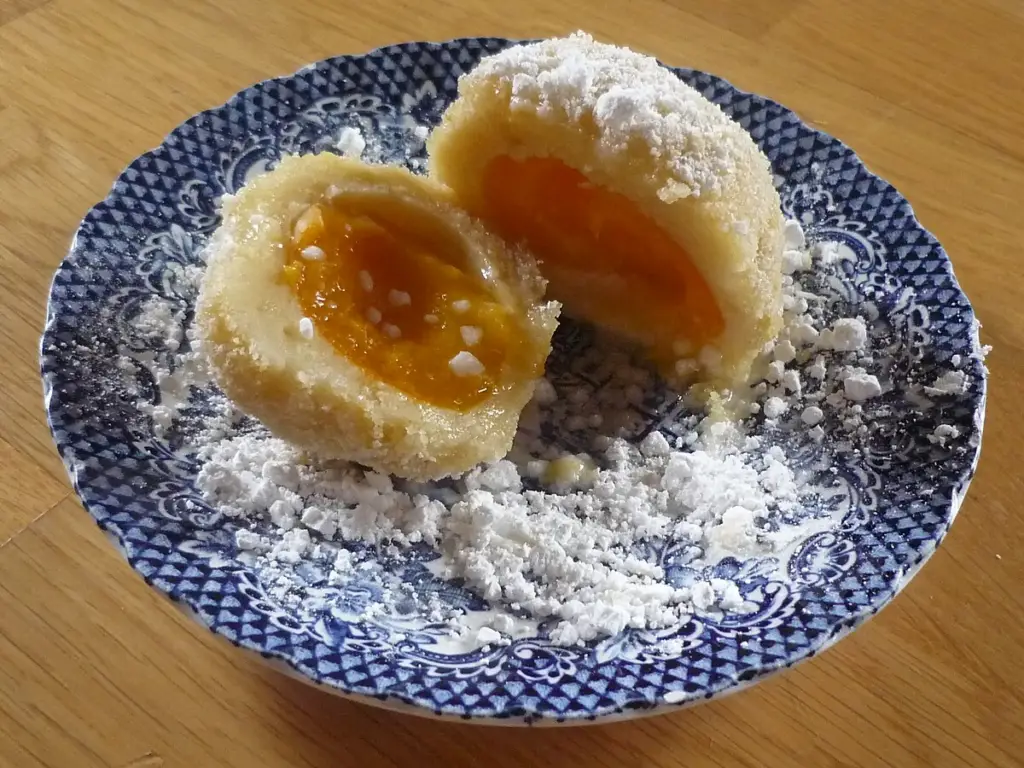
Marillenknödel, also known as Austrian Apricot Dumplings, is a delightful Austrian dessert that is particularly popular during the apricot season. It consists of a soft potato or bread dough wrapped around a fresh apricot, sweetened with a sugar cube, and then gently boiled until the dumplings are tender.
The cooked dumplings are traditionally rolled in sweet breadcrumbs and served warm, often with a dusting of powdered sugar and a drizzle of melted butter. These sweet dumplings are a perfect way to enjoy fresh apricots in a delicious dessert.
Austrian Cuisine – Marillenknödel Ingredients
Dumplings:
- 8 fresh apricots (ripe but slightly firm)
- 2 cups mashed potatoes, cooled (you can use leftover boiled potatoes or freshly boiled and mashed)
- 1 cup all-purpose flour
- 1 egg
- A pinch of salt
- 8 sugar cubes
Sweet Breadcrumb Coating:
- 1 cup fine breadcrumbs
- 2 tablespoons unsalted butter
- 2 tablespoons granulated sugar
- A pinch of ground cinnamon
Serving:
- Powdered sugar
- Extra melted butter
Austrian Cuisine – Marillenknödel Instructions
Prepare the Apricots
Wash and dry the fresh apricots. Cut them in half, remove the pits, and replace each pit with a sugar cube. Set aside.
Prepare the Dumpling Dough
In a large mixing bowl, combine the mashed potatoes, all-purpose flour, egg, and a pinch of salt.
Mix until a soft, pliable dough forms.
Assemble the Dumplings
Divide the dough into 8 equal portions.
Take one portion of dough and flatten it in the palm of your hand.
Place an apricot half, sugar cube side down, in the center of the dough.
Carefully wrap the dough around the apricot, making sure there are no gaps or openings. Seal the edges well, forming a smooth dumpling. Repeat with the remaining apricots and dough.
Cook the Dumplings
Bring a large pot of water to a boil
Gently place the apricot dumplings into the boiling water. Be cautious not to overcrowd the pot; you may need to cook them in batches.
Simmer the dumplings for about 15-20 minutes, or until they are cooked through and tender. They will start to float to the surface when they’re done.
Prepare the Sweet Breadcrumb Coating
In a separate skillet, melt the unsalted butter over medium heat.
Add the fine breadcrumbs and stir. Continue cooking until the breadcrumbs turn golden brown.
Add the granulated sugar and a pinch of ground cinnamon to the breadcrumbs. Stir well to combine and cook for another minute or two until the sugar has melted.
Coat the Dumplings
Remove the cooked dumplings from the pot with a slotted spoon.
Roll the hot dumplings in the sweet breadcrumb mixture until they are well coated.
Serve the Marillenknödel
Serve the apricot dumplings warm, either dusted with powdered sugar, drizzled with extra melted butter, or both.
Marillenknödel is a delightful Austrian dessert that celebrates the natural sweetness of apricots. The contrast between the soft, doughy exterior and the sweet, juicy interior is simply delicious. Enjoy these dumplings as a delightful treat.
Austrian Cuisine – Buchteln

Buchteln, also known as Wuchteln or Rohrnudeln, are a popular Austrian dessert or sweet dish. These are sweet, fluffy, and slightly sweet yeast rolls often filled with fruit preserves, marmalade, or other sweet fillings.
Buchteln are traditionally baked in a round or rectangular dish, and they are often served with a dusting of powdered sugar. This delightful Austrian treat is enjoyed as a dessert or sweet snack.
Austrian Cuisine – Buchteln Ingredients
Dough:
- 2 1/4 teaspoons active dry yeast
- 1/4 cup warm milk (about 110°F or 43°C)
- 2 1/4 cups all-purpose flour
- 1/4 cup granulated sugar
- 1/2 teaspoon salt
- 1/3 cup unsalted butter, softened
- 2 large eggs
- 1 teaspoon vanilla extract
- Zest of 1 lemon
Filling (optional):
- Fruit preserves or marmalade of your choice
Topping:
- 1/4 cup unsalted butter, melted
- Powdered sugar, for dusting
Austrian Cuisine – Buchteln Instructions
Prepare the Dough
- In a small bowl, sprinkle the active dry yeast over warm milk.
- Let it sit for about 5-10 minutes, or until it becomes frothy.
- In a large mixing bowl, combine the all-purpose flour, granulated sugar, and salt.
- Add the softened unsalted butter, eggs, vanilla extract, and lemon zest to the dry ingredients.
- Pour the yeast mixture into the bowl with the other ingredients.
- Knead the dough: Use a dough hook attachment on a stand mixer or knead the dough by hand until it becomes smooth and elastic. This may take about 5-7 minutes. If the dough is too sticky, you can add a bit more flour.
- Place the dough in a lightly greased bowl, cover it with a clean kitchen towel, and let it rise in a warm place for about 1-2 hours, or until it has doubled in size.
Assemble the Buchteln
- Preheat your oven to 350°F (175°C).
- Punch down the risen dough to release any air bubbles.
- Divide the dough into equal portions. The size depends on your preference, but they are typically about the size of a small fist.
- Flatten each dough portion into a small disc.
- Place a small spoonful of fruit preserves or marmalade in the center of each dough disc.
- Gather the edges of the dough and pinch them together to seal the filling inside, forming a ball.
- Place the filled dough balls in a greased baking dish. You can use a round or rectangular dish.
- Brush the tops of the Buchteln with melted butter.
Bake the Buchteln
Bake the Buchteln in the preheated oven for about 20-25 minutes, or until they are golden brown and sound hollow when tapped.
Serve the Buchtel
- Remove the baked Buchteln from the oven and let them cool slightly.
- Dust the Buchteln with powdered sugar before serving.
Buchteln are best enjoyed fresh and warm. They’re perfect for dessert, a sweet snack, or even breakfast. The soft, fluffy dough and sweet fruit filling make them a delightful treat.
Austrian Cuisine – Kaiserschmarrn

Kaiserschmarrn, often referred to as the “Emperor’s Pancake,” is a classic Austrian dessert that’s both delicious and fun to prepare. It’s a light, fluffy, and slightly caramelized pancake that is typically torn into pieces during cooking and served with powdered sugar, fruit preserves, or compotes. The dish is named after Emperor Franz Joseph I of Austria, who was particularly fond of it.
Austrian Cuisine – Kaiserschmarrn Ingredients
- 4 large eggs, separated into yolks and whites
- 1/2 cup granulated sugar
- 1 1/2 cups all-purpose flour
- 1 cup milk
- 1/2 teaspoon vanilla extract
- A pinch of salt
- 4 tablespoons unsalted butter
- Powdered sugar, for dusting
- Optional toppings: fruit preserves, compotes, raisins soaked in rum or rum-soaked sultanas
Austrian Cuisine – Kaiserschmarrn Instructions
Separate the Eggs
Start by separating the egg yolks from the egg whites. Place the yolks in one bowl and the whites in another.
Prepare the Batter
In the bowl with the egg yolks, add the granulated sugar and vanilla extract. Beat the mixture until it’s pale and fluffy.
Add Flour and Milk
Gradually add the all-purpose flour and milk to the egg yolk mixture. Mix until you have a smooth batter.
Whip the Egg Whites
In a separate bowl, beat the egg whites with a pinch of salt until stiff peaks form. The egg whites should be fluffy and hold their shape.
Fold in the Egg Whites
Gently fold the whipped egg whites into the batter until well combined. Be careful not to overmix to keep the batter light and fluffy.
Cook the Pancake
In a large, non-stick skillet or frying pan, melt the unsalted butter over medium heat. Once the butter is sizzling, pour in the batter and spread it evenly.
Cook and Tear
Allow the pancake to cook undisturbed until the edges start to set and the bottom is golden brown. This may take about 5-7 minutes.
Tear the Pancake
Using a spatula, tear the pancake into large, bite-sized pieces. It may be a bit runny in the center, which is normal.
Flip and Caramelize
Flip the torn pieces over to cook the other side. Allow them to caramelize and turn a lovely golden brown.
Serve
Sprinkle powdered sugar generously over the Kaiserschmarrn. You can also add optional toppings like fruit preserves, compotes, or rum-soaked raisins.
Kaiserschmarrn is best served hot. Enjoy it immediately, and savor the delightful contrast between the crispy edges and the fluffy interior.
Kaiserschmarrn is a delightful and classic Austrian dessert. The pancake’s unique texture and the addition of powdered sugar make it a sweet treat that’s sure to please your taste buds.
Conclusion
As I come to the end of our culinary journey through Austria, I’m left with a deep appreciation for the richness and diversity of its cuisine. From the hearty and comforting traditional dishes to the delicate and indulgent desserts, Austrian cuisine offers something for every taste bud.
Exploring the influence of geography, the history, and traditions behind each dish, and the vibrant food culture that binds it all together has been a truly enlightening experience. I hope that this article has inspired you to try some of the popular Austrian recipes, explore the lesser-known Austrian food specialties, and appreciate the significance of Austrian culinary heritage.
As you venture into your own kitchen to recreate the authentic Austrian dishes, remember to use traditional cooking methods and key ingredients for the most authentic experience. And don’t forget to pair your meal with a delicious Austrian wine or beer to round out the flavors and elevate the experience.
Thank you for joining me on this culinary adventure through Austria. I hope that you have enjoyed the journey as much as I have. So go ahead, indulge in the delicious flavors of Austrian cuisine and let your taste buds embark on an unforgettable culinary journey!
FAQ’s
What are some traditional Austrian dishes?
Some traditional Austrian dishes include Wiener Schnitzel, Tafelspitz, and Kaiserschmarrn.
What is the influence of geography on Austrian cuisine?
The geographical location of Austria has played a significant role in shaping its unique cuisine, with each region contributing its own flavors and ingredients.
Which city in Austria is known for its culinary delights?
Vienna is known for its culinary delights, particularly its Viennese recipes like Sachertorte and Apfelstrudel.
What are some hidden gems in Austrian cuisine?
In addition to the well-known dishes, Austrian cuisine has many lesser-known specialties, including hearty stews and unique cheese varieties.
How has Austrian food culture evolved over the years?
Austrian food culture is deeply rooted in tradition and local ingredients, with an emphasis on seasonal produce and mealtime rituals.
What are some key elements of authentic Austrian dishes?
Authentic Austrian dishes often include essential ingredients and specific cooking methods that contribute to their unique flavors.
What are some popular Austrian desserts?
Some popular Austrian desserts include Linzer Torte, Strudel, and Sachertorte.
How is Austria preserving its culinary traditions?
Austria is actively protecting and promoting its culinary traditions through culinary schools, food festivals, and other initiatives.
What are some recommended wine and beer pairings for Austrian cuisine?
Austrian cuisine pairs well with a variety of wines and beers, offering a perfect complement to traditional dishes.
What can I expect from a culinary journey through Austrian cuisine?
A culinary journey through Austrian cuisine offers a diverse range of flavors, traditional dishes, and a deep appreciation for culinary heritage.
Where can I find Austrian cuisine recipes?
You can find Austrian cuisine recipes in cookbooks, online food blogs, and websites dedicated to Austrian cooking.
Date Last Edited

